What is Pottery and Ceramics?
last update: 7 February 2022
Introduction
The world of pottery and ceramics is incredibly complex. We know the place they have in the kitchen, on the dinning table and even as a decorative art form, but they are also an essential material used in many, many industrial sectors.
Starting with the basic, we need to first understand the difference between pottery and ceramics.
In fact pottery can be almost anything - earthenware, stoneware, or porcelain. Yes, porcelain is quite different from earthenware, but it is still a form of vitrified pottery. And pottery is in fact just one type of ceramic. The difference is that all types of pottery are made out of clay, whereas ceramics is more generally defined as an inorganic, non-metallic solid made by the action of heating and then cooling. Most common ceramics are crystalline, and the word actually derives from the Greek κεραμικά (keramiká) for "pottery". A crystalline solid simply means that its atoms are highly ordered in a lattice that extends in all directions, whereas glass is a form of non-crystalline or amorphous ceramic.
Firstly, each word, i.e. inorganic, non-metallic and solid, has its own definition, but taken together they actually define a much narrower set of materials. Ceramics are defined as solid products made from inorganic materials which have non-metallic properties, e.g. ionically bonded (magnesia) magnesium oxide MgO, or covalent bonded silicon carbide SiC, which crystallises in the cubic structure of sodium chloride (salt) and diamonds, respectively.
Wikipedia tells us that clay is the oldest ceramic material, and that there are three main groups of clay, but there are four other groups that are sometimes also classified as clay minerals. And it goes on to tell us that there are approximately 30 different types of "pure" clays in these categories, but most "natural" clay deposits are mixtures of the different types. Interestingly, a simply search on types of clay yields different sources telling us that there are 3, 4, 5, or 6 common types of clay. Since some descriptions are over simplifications, yet others are far too technical, I''m going to keep to the simplest description I can find.
We are going to stick with defining clay as being either earthenware, stoneware, or porcelain.
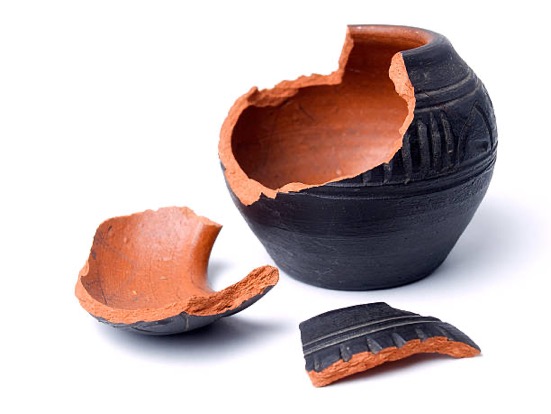
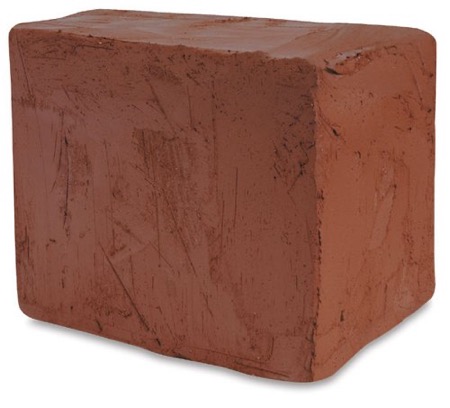
Earthenware is glazed or unglazed nonvitreous pottery that has normally been fired below 1,200°C. Basic earthenware, often called terracotta, absorbs liquids such as water. However, earthenware can be made impervious to liquids by coating it with a ceramic glaze, which the great majority of modern domestic earthenware has. So-called earthenware clays (sometimes called "common clay") are typically red or brown in colour due to their high iron content. The clay may be highly plastic, and may feel sticky or greasy to the touch.
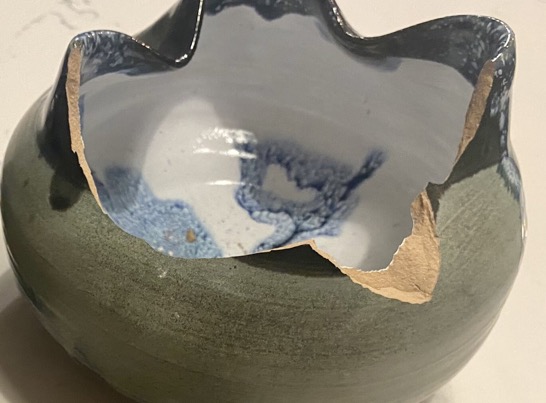
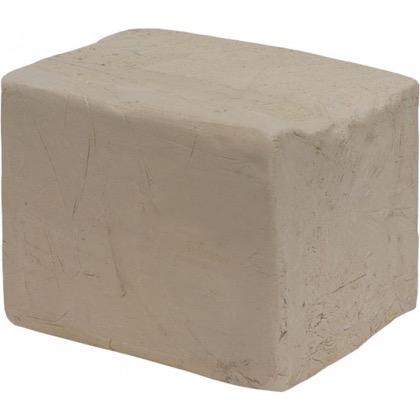
Stoneware is a broad term for pottery or other ceramics fired at a relatively high temperature. A modern technical definition is a vitreous or semi-vitreous ceramic made primarily from stoneware clay or non-refractory fire clay, but it can also contain quartz and feldspar. Whether vitrified or not, it is dense, hard, and nonporous (does not soak up liquids), so it may or may not be glazed. However, normally it will be glazed and fired a second time. Stoneware clays (sometimes called sagger clay) have good plastic properties and typically have a grey or brownish colour.
Stoneware has its origins in China during the Shang dynasty (ca. 1600-1064 BC). Historically, around the world, it has been developed after earthenware and before porcelain, and has often been used for high-quality as well as utilitarian wares. Usually inexpensive it can be used for very large items, as well as tableware and art ware.

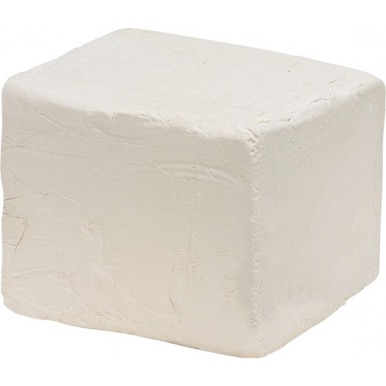
Porcelain is a ceramic material made by heating clay, generally including materials such as kaolinite, in a kiln to temperatures between 1,200°C and 1,400°C. Kaolin (sometimes called "Chine clay") is highly refractory, has poor plastic properties and is often white and fairly free from organic contaminates.
Refractory means a material that is resistant to decomposition by heat, pressure, or chemical attack, and retains strength and form at high temperatures. So a non-refractory material is just one that will slowly loose it strength at higher temperatures. As an example, glaziers' putty, resin cements, mastics, etc. are non-refractory, in that when heated they will start to fail as bonding materials.
Primary clays or residual clays were formed on the site of their parent rocks and have not been transported, either by water, wind, or glacier. Typically white and pure, free from organic contamination, most Kaolins are primary clays. Other clays are often called secondary clays or transported clays because they have been transported from the site of the original parent rock. Although water is the most common agent of transportation, wind, glaciers and tectonic events are also methods of movement. Secondary clays are typically greyer and darker and have more plastic properties.
As a rough guide, modern earthenwares are normally fired in a kiln at temperatures in the range of about 1,000°C to 1,200°C, stonewares at between about 1,100°C to 1,300°C, and porcelains at between about 1,200°C to 1,400°C. Even the small amount of glass formed during the firing of a ceramic material can be thought of as the glue that holds the finished work together. The formal name for this is vitrification, and it transforms a clay body into a form of hard, non-crystalline glass.
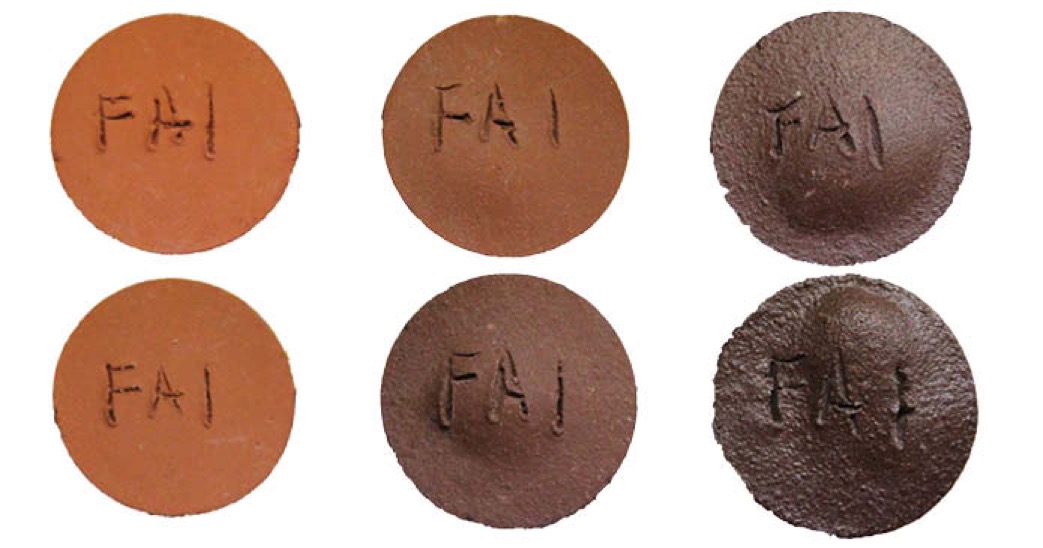
Above we have terracotta samples fired to increasingly higher temperatures. All clay bodies shrink during firing, and as the body is heated it shrinks and becomes denser. As the peak firing temperature increases, that shrinkage continues until the clay body reaches its maximum density. If heating continues after peak density is reached, gas bubbles in the glass phase expand and the body expands too, becoming bloated and less dense again. However, there is an important difference in the body before and after full density is reached. The pores early in the firing are open and can absorb moisture. Late in the firing those pores are only in the glass phase so they are closed, sealed in by the glass. The bloating occurs because the glass phase contains bubbles of vapour that form during the firing. As the kiln temperature increases, the vapour inside the bubble is heated and its pressure inside the bubble increases. As the glass phase becomes less viscous it encapsulates the vapour, but still permits the bubble to continue to expand. If firing proceeds to a high enough temperature, the body will either slump from formation of an excessive quantity of glass phase or bloats will burst, rupturing the surface of the ware.
The samples above are at or very near full density at the two lowest firing temperatures. However, at 1125°C a very slight bloat is evident, and at higher temperature the samples become more vitrified. By 1200°C the body is seriously bloated, glassy, and obviously overfired.
Chinese porcelain in Medieval Europe
Chinese porcelain was already known in Europe in the 13th century, however it did not become common until the 16th century when the Portuguese established their trading stations in eastern waters. Despite no porcelain being recorded in Europe before the 13th century, it was well known in the Near and Middle East. Chinese porcelain was traded in the Middle East from the beginning of the 9th century, but it remained a minor element in an extensive trading network for spices, silk and other luxury goods. Chinese vessels were used to hold perfumes in the 9th century, and 9th and 10th century sherds with a mottled green and yellow finish have been found in Cairo, Baghdad and Tehran. Chinese porcelain was not just valued for it quality and functionality, powdered porcelain was also offered as a cure for toothache and bleeding from the nose, and celadon vessels were supposed to reveal the presence of poisons.
We know that the Abbasid Caliphate (750-1258) imported millions of Chinese ceramics, beautiful white monochromes from northern China and green glazed stoneware from the southern province of Zhejiang. Most of these ceramics do not exist anymore, but in some fortunate cases shipwrecks found along the former maritime trading routes give us evidence of these early forms of global trade. One of the most famous discoveries was the Belitung shipwreck, an Arab dhow, which sailed with a cargo of 60,000 ceramics from China towards an unknown Abbasid port, and which sunk near the Indonesian island of Belitung. One bowl was dated 826. Another 10th century shipwreck found off the coast of Java near the port of Cirebon had a cargo of 250,000 Chinese ceramics.
Excavations in Europe have found fragments of Chinese porcelain in a royal residence (1285-1309) in Italy, in a late 14th century street in Winchester, and in a 15th century rubbish pit in Budapest. In addition, there are references to Chinese porcelain in a will dated 1323, an inventory from 1363, a notarial document from 1384, and as gifts made in 1447, 1461, 1487, and so on.
This all supports the idea that Chinese porcelain was extremely rare and high prized in Europe until it started to be imported sometime between 1517 and 1521. Little is known of the extent of Portugal's 16th-century trade, even after the country was accorded a permanent station in Macao in 1557, but it succeeded in initiating the two most defining aspects of export porcelain. Firstly, as a vehicle for Western decoration, and secondly, as tableware that would ultimately determine the repertoire of the 18th-century European ceramics factories. At least until the 18th century Chinese porcelain had all the advantages, i.e. unique material, usefulness, colour, and low cost. It has been estimated that 185 million pieces of porcelain were exported from East Asia to Europe between 1550 and 1800.
Europe came into direct contact with Chinese porcelain only in the 16th century. Some pieces made their way overland to Europe, but they were the exceptions. Transporting heavy and fragile porcelain long distances over land was just not practical. However, the desire to find an alternative to land routes linking East Asia with the Mediterranean was driven by spice, not porcelain. Spices were very much in demand in Europe and people were willing to pay very high prices, giving traders good margins. People wanted pepper from the Indian western Malabar Coast and Sumatra and more exotic spices such as nutmeg and cloves from the Indonesian Spice Islands between the Philippines and Australia. In the 350 years following the discovery of the seaways to Asia there was a constant battle between various European powers to get their share (and more) in the lucrative trade of Asian products.
However, a vibrant trading network stretching from the Arabian Sea along the coast of Persia, India, and Ceylon towards the Southeast Asian coasts and the South China Sea had already been established and working for centuries. Arab dhows, Chinese junks, Muslim traders from Gujarat and the Malay Peninsula, and Armenian and Persian merchants had facilitated the exchange of Indian cotton and pepper, Persian silk, Chinese gold, silk and ceramics, Indonesian spices, Japanese silver and lacquer ware long before any European ship appeared. A complex system of trading and foreign relations had been in place for centuries, mainly working according to the rules of the Chinese tributary system. Countries wanting to trade with China had to send tribute missions to the Chinese Emperor, to acknowledge the cultural superiority of the "Middle Kingdom". From the 11th to the 14th century the South China Sea saw an intensity of maritime traffic similar to that in the Mediterranean Sea. Quanzhou, beside the Taiwan Strait and at the north east corner of the South China Sea, was the most relevant port during that time. During the Ming dynasty countries such as Annam (northern Vietnam), Champa (southern Vietnam), Korea, Japan, the Sultanate of Malacca, Java, Sukhothai, Ceylon and even Indian provinces accepted the tributary relationship. Official tributary trade was the predominant form of commodity exchange, since private trading was banned. However, being a tributary state of China did not imply a colonial status, it simply established an economic relationship based on mutual benefit.
Malacca was one of the most important entrepôts and trading hubs before the Portuguese arrived. Traders from all parts of Asia built their warehouses in Malacca, a city that took advantage of its strategic geographic location and the cosmopolitan attitude of the Malacca Sultanate. Soon after having established the first trading posts (factories) and fortifications in India the Portuguese headed further south east in order to gain control of Malacca and to get access to the trading routes for spices. A Portuguese fleet under the command of Afonso de Albuquerque (ca. 1453-1515) conquered Malacca in 1511 and established various new entrepôts on the way between Africa and East Asia to facilitate Asian-European trade. Goa at the Indian west coast became the capital of the Portuguese Estado da India. Jorge Álvares (d. 1521) was the first European who reached China by sea in 1513, and the Europeans first contact with Japan took place in 1542. The Portuguese Estado created entrepôts along the trading route from Lisbon to India via the African and Arab coasts, from Malacca to the Spice Islands and from Macao to Nagasaki. The commercial network brought Portugal great wealth during the 16th century. However, even though they forced (by executing military force) their way into the existing Asian trading system, Portugal was not able to alter the commercial rules. Spices, textiles, porcelain and other commodities highly in demand in Europe had to be paid for. And since Portugal did not have much to barter, the commodities had to be paid for in silver.. Portugals power was off-shore. Highly armed ships, bigger and faster than any Asian competitor, and the control of various important entrepôts such as Muscat, Hormuz, some Indian ports in northern Gujarat and at the southern Malabar Coast, gave them much advantage on the sea routes. They did not only ship commodities from one port to the other but they were also able to tax other ships with the so-called "cartaz" fee. The cartaz had to be bought by every merchant ship in the region as a license to trade and transport, and it granted the buyer Portuguese protection against pirates and other states. Goa, Diu, Hormuz and Malacca were the most important customs offices to charge the cartaz fee. On-shore however, the influence on land-based or inland-oriented empires was limited, and the Portuguese were only able to obtain a very tiny window for some very restricted trading activities, e.g. the Chinese Emperor gave permission in 1557 to the Portuguese to rent the Macao peninsula for an annual tribute, and in Japan the Estado was allowed to open a small trading post in Hirado, near Nagasaki.
Macao was the only official trading city for Europeans in Mainland China for more than a century until Canton (Guangzhou) was officially opened for Sino-European trade in 1684. But even then, the Chinese officials restricted direct exchange for more than 150 years, until they had been violently forced to give access to more harbours after they lost the Opium Wars (1839-1860). And it was the sea route between Macao and Nagasaki which produced the highest profit for the Portuguese traders. Since the Ming banned private trade, Portuguese ships were able to substitute Chinese junks in shipping Chinese silk and porcelain to Japan in exchange for Japanese silver, which was highly in demand in China, and which gave Portugal additional means to purchase spices or textiles in Indonesia and India. The silk for silver trade was one of the most lucrative arbitrage trades until the 17th century. This applied also for the Dutch East India Company which gained a monopoly for trade with Japan in 1641. Macao was for several reasons a fascinating case in the history of trade and Chinese European relations. It was not only the first settlement for Europeans in China, it also preserved its position as the most relevant location for foreigners for almost 200 years until Hong Kong was founded.
Canton played the most prominent role in the Eurasian porcelain trade. The regular importation of Chinese porcelain by Portuguese ships started around 1550. Since direct trade was not possible until the establishment of a trading post in Macao was endorsed, Portuguese traders probably purchased the first pieces of porcelain in one of the inner Asian entrepôts in Malacca or Patani on the Malay Peninsula, or in the Thai capital Ayutthaya, or on Sumatra, Java or Sulawesi, i.e. places, where Chinese junks stopped to barter silk, copper, gold and ceramics for spices, tin and silver. In 1567 the Ming ban officially ended and the ceramic trade started its rapid expansion. Portuguese traders were now able to buy porcelain both officially in Macao and from Chinese junks at any entrepôt in the South China Sea. However, porcelain was just a necessary ship ballast and a supplement to the other more relevant and precious trading goods heading to Lisbon such as pepper, other spices and plants, silk and cotton. It did not play a crucial role in trade with Europe until 1600. Cargo lists for 1587-1588 show that around 68% of the cargo weight was pepper, 3.7% ginger, 6.3% cinnamon, 10.5% cotton and silk, 8.4% indigo dye and 1.5% others including porcelain. The Wanli, discovered off the east coast of Malaysia, was a ship under Portuguese flag sent to ground in a battle with the Dutch in 1625. It had a porcelain cargo of approximately 37,000 blue and white porcelains from Jingdezhen and it was on a voyage from Macao to Malacca, some of which were so-called "Chine de command", porcelain with unglazed images of the coat of arms of European customers. In 1565 the Manila galleon route was established and until 1815 it sailed the oceans between Manila and Acapulco for about 250 years, brought porcelain, spices, silk, ivory, jade and other luxuries from China to Mexico in exchange for silver. Hundreds of Chinese junks sailed every year (from December to April) between the Chinese coast and Manila, which became an important entrepôt for Chinese-European trade via Mexico. The San Diego, a Spanish galleon sunk in 1600 in a battle with two Dutch ships near the Manila bay, was discovered in 1991 by the maritime archaeologist Franck Goddio. The Dutch independence war (1568-1648) against Habsburg Spain even took place far away from home. Goddio excavated from the seabed Chinese blue and white Kraak porcelain from Jingdezhen and blue and white Shantou porcelain from Zhangzhou as examples of the intensive trade relations between China and the Spanish Philippines and Spanish Mexico. And in 2016, thousands of Ming dynasty porcelain shards were found a meter and a half underground nearby Acapulco's Cathedral.
For more than a hundred years the ships of the Estado da India had a monopoly in the maritime long-distance trade between Europe and Asia, only challenged by the Spanish galleons sailing from Manila to Acapulco and from Veracruz towards Cádiz or Sevilla. Spanish politics in Europe were the reason Portugal had to face a new powerful European competitor starting from 1600, a competitor that was able to destroy almost all its possessions in Asia. Sixty years later Portugal had been almost pushed out of the profitable trade and the Dutch were supplying Europe more effectively and on a much bigger scale with Asian goods than ever before. The first encounters between the Dutch and the Portuguese in Macao ended fatally for the protestant sailors. In response, Spanish and Portuguese ships were attacked by Dutch warships, and sent to ground or taken as a prize. The Portuguese carrack Santa Catarina fully laden with silk, musk and porcelain was captured near the shores of Singapore and the cargo was sold in Amsterdam, in what was the first big auction of Chinese porcelain in northern Europe. It is said that the Dutch later called the blue and white porcelain "Kraak" since it was first been shipped to Europe by Portuguese carracks. A second Dutch expedition to the Indonesian Archipelago was so extraordinarily profitable that the Dutch East India Company was established in 1602. Between 1602 and 1796 the they sent almost a million Europeans to work in the Asia trade on 4,785 ships, and netted for their efforts more than 2.5 million tons of Asian trade goods, making them the most important trader and carrier between Asia and Europe. Just as the Portuguese had done before, the Dutch had to also barter, buying in one port, selling in another, and so on, with no money, just ships. The Dutch were also not able to directly access the Chinese market, but they did import porcelain between 1604 and 1657, when the conflict between the Ming and Qing dynasties ended most porcelain production for about 25 years. One report in 1644 mentions the arrival of a Company ship from Formosa with 202,332 pieces of miscellaneous porcelain. The invoice of the ship listed accurately all types and shapes of porcelain including flasks, flower pots, wine-jugs, beakers, mustard-pots, saucers, cups, bowls, dishes, platters etc. and even gave the exact number such as 9,070 klapmutsen (the Dutch name for large bowls), 10,485 bowls, 15,695 dishes, 33,020 red tea-cups etc. In total the price was 37,987 Dutch guilders (florin fl.) resulting in an average of about 0.18 fl. per piece. One Dutch guilder at that time was approximately 10.8 g silver or 0.29 Tael (the Chinese silver based currency) which brought the porcelain cargo to an equivalent of 410 kg of silver. The list indicated clearly that most of the cargo was porcelain for daily use, and such today most of it will have been broken and/or lost over the centuries (what ever remained can probably be found in the antique markets. When in 1653 the shipment came to an end because of the Chinese civil war, Dutch customers desperately looked for alternatives. First, Japanese potters were encouraged to copy Chinese Kraak porcelain. And secondly, they tried to produce it domestically. The potters in Delft established 17 new factories between 1653 and 1662 as a direct response to the shortage of Chinese imports. Dutch Delft ceramics were not porcelain but faience, i.e. earthenware with a white tin glaze, and only looked like porcelain from a distance. It was neither as translucent nor as durable as porcelain, an it took the Europeans another 50 years before they were able to produce real porcelain.
The history of the Eurasian porcelain trade is very much linked to the age of discovery, and trade had come almost to an end when Great Britain started to establish its colonial regime. The bulk importation of Chinese porcelain by the British East India Company ended in 1791, well before the British Straits Settlements were created (1826) and 50 years before the establishment of Hong Kong (1841). These events took place more than 250 years after the first English explorer, Francis Drake (ca. 1540-1596), completed the second circumnavigation of the earth in 1580 following the voyage of Magellan and Elcano who succeeded the circumnavigation in 1522.
When the first British diplomatic mission, the famous Macartney Embassy, to the Chinese Emperor Qianlong took place in 1793, the Eurasian porcelain trade was almost over. When the porcelain trade ended, equal intercultural interaction ended. Troops of the British East India Company had defeated the Indian ruler of Bengal in the Battle of Plassey in 1757. Bengal, the major production area of cotton, was the wealthiest state of the Indian Mughal Empire.
However, the beginning of the British activities in Asia was not very successful. During the 17th century it had to face the strong economic and military rivalry of the Dutch. Three Anglo-Dutch wars between 1652 and 1674 were fought and ended in favour of the Dutch States. After the Anglo-Dutch wars the British, similar to the Portuguese, had to withdraw from the East Asian region. It would take more than a century before the British were able to get strongholds in the East Indies, mainly on the Malay Peninsula when they took formal possession of Penang Island in 1786, and founded the colonial Singapore in 1819. However, for several reasons the British were the most successful East Indian company to establish a direct trade relationship with China, crucial for the porcelain trade. England became only the second European nation to open direct trade with China in mainland China, after the establishment of Portuguese Macao in 1557. The British became by far the most relevant carrier of Chinese goods to Europe surpassing the successful Dutch and surpassing all other European nations combined. The British imported substantial amounts of Chinese porcelain, but not before 1685. They started with a small trading post in Xiamen (Amoy) in 1678 and they were able to purchase silk, tea and porcelain in exchange for silver. Then came Zhoushan Island and Taiwan in 1672. All these trading posts were located in the area controlled by the Ming loyalist Zheng Chenggong, making the British an ally of the Qing Emperor's biggest enemy. The Qing Dynasty did not favour too many uncontrolled activities by foreign merchants and dedicated in 1699 Canton as the place where most of the Sino-Western trade should be carried out. In 1699 the British alone imported porcelain to the value of more than £15,000 or 45,000 Chinese Tael, the equivalent of almost 1.7 tons of silver, and representing around 1.2 million pieces of imported porcelain for that year alone. From 1699 until the official porcelain imports of the British came to an end in 1791, porcelain to the value of an average of £6,000 annually was purchased in Canton. This is a rough equivalent of 500,000 pieces per year and in total around 45 million pieces were shipped to London by the East India Company alone.

Above we have a street map of Canton in the year 1665. Direct Chinese trade with Europe in the 18th century took place almost exclusively in Canton, the only port open to European traders until the end of the first Opium War in 1842. Most of the porcelain that went from China to Europe was shipped from Canton.
The Canton System began in the early 18th century and continued for roughly 150 years until 1842. It was a system of regulated foreign trade between China and the Western world. Foreigners were confined to small commercial districts or agencies called the "thirteen factories" located at the Pearl River. Within these factories, foreigners were prohibited from outside contact with Chinese nationals. Outside the trading season, staff of the foreign companies had to move downstream to Macao. Essentially, this was to meet the desire of the Qing court and their concern with cultural protection, isolation of foreign interest in China, and also the secured collection of necessary taxes and duties. A central feature of the Canton System was the existence of the "Cohong", a monopolistic guild of licensed Hong merchants who officially traded with the foreign companies and charged all taxes and fees on behalf of the Chinese government. The import-export business of the East India companies was in the hands of so-called "supercargoes" (Laban). They represented the company to the Chinese authorities and the Hong merchants. The thirteen factories district was outside the city walls, in the south west along the river. The foreign companies were allowed to rent the buildings but not allowed to enter the city itself. The buildings and two, later three, streets in-between the buildings heading from the river to the thirteen factories street formed an enclave.
Canton attracted every European East India company which had been established during the 17th and 18th centuries, the French, Swedish, Danish, Spanish, etc. Data exists for the cargo of five Dutch ships in 1770. They carried a total of 921,835 items, including more than 367,000 coffee cups with saucers but without handles, as well as beer tankards, chamber pots, cuspidors, shaving bowls, and more than 53,000 "moorish cups", which I guess were cups with Hispano-Moresque inspired designs. Counting each piece (cup and saucer separately, etc.) one estimate put Swedish imports at 33.8 million pieces between 1732 and 1766, and another 11.3 million pieces through to 1786. At 3,000 Taels per 100,000 pieces (112 kg of pure silver) would suggest that they spent over 50 tons of pure silver in 54 years.
One estimate put the total number of pieces of porcelain shipped to Europe by the main traders (between 1550 and 1800) at about 184 million. A finer analysis of the cost of the different types of porcelain items resulted in an equivalent cost of 189 tons of pure silver, which was estimated in terms of 2018 purchasing power at £4.2 billion. As a comparison, silver production from mines in Mexico and Peru was estimated at 17,000 tons in the 16th century, 42,000 tons in the 17th century, and 74,000 tons in the 18th century.
As a final word in this section here is the text of the letter of the Chinese Emperor Qianlong sent to King George III in 1793, "Hitherto, all European nations, including your own country's barbarian merchants, have carried on their trade with our Celestial Empire at Canton. Such has been the procedure for many years, although our Celestial Empire possesses all things in prolific abundance and lacks no product within its own borders. There was therefore no need to import the manufactures of outside barbarians in exchange for our own produce. But as the tea, silk and porcelain which the Celestial Empire produces, are absolute necessities to European nations and to yourselves, we have permitted, as a signal mark of favour, that foreign hongs [merchant firms] should be established at Canton, so that your wants might be supplied and your country thus participate in our beneficence".
For a more detailed review check out "The Ceramics of Eurasia - How export porcelain has shaped a globalised world".
European pottery from the 16th century
Archaeological studies of pottery production sites, which range from the recovery of factory products on manufacturing sites or in deposits of ceramic 'wasters', to the excavation of kilns, workshops, etc. have resulted in a much clearer account of the development of European ceramic production from the 16th century.
Between the 16th and the 18th centuries, Europe witnessed the gradual but widespread and radical appearance of new ceramic types and vessel forms. This "ceramic revolution" witnessed an increase in the scale of the manufacture and consumption of ceramics, while the appearance of ceramics at the table "represent[ed] the transformation of the medium from an exclusively utilitarian to a social commodity". The main new ceramic ware types to emerge during this period were salt-glazed stonewares, tin-glazed earthenwares, and new types of fine earthenwares with an all-over lead glaze.
The first of these ceramic types is primarily associated with the Rhineland. The production of vitrified stoneware fired to temperatures of 1200°C was well established there before the 16th century, for example, at Siegburg, Langerwehe and Raeren. Below we have three German stoneware jugs, dating from the 16th and 17th centuries.

From the 16th century, production developed on an industrial scale in and around the centres of Cologne, Raeren and Frechen and in the south-west Westerwald to meet the demands of an expanding market. Wheel-thrown vessels, frequently decorated with applied reliefs, were fired in kilns fuelled by wood. From the early 16th century stoneware production benefited from the widespread adoption of salt glazing. A distinctive type of horizontal stoneware kiln has been revealed by excavations in Frechen, with antecedents in Siegburg and Langerwehe. A kiln of a very similar form was excavated at Woolwich in London in 1978, where it had almost certainly been built and operated by German potters in the mid-17th century. From 1672, John Dwight secured a monopoly to produce stonewares in London. His wares closely copied Rhenish types, but German influence did not extend to the type of kiln used. Excavations at Dwight’s Fulham factory have shown that he adopted the rectangular kilns then favoured by London tin-glaze potters for firing his stonewares.
Tin-glazed wares were an equally widespread phenomenon in medieval and post-medieval Europe. Introduced into Europe from the Near East, the production of elaborate lustre-decorated tin-glazed wares was established in Moorish Spain by the 13th century. During the 15th century, lustreware production flourished in Valencia, and the industry’s products were still being traded within western and north-western Europe during the 16th century. Following the discovery of the Americas, however, it was Seville that developed as Spain’s leading producer of earthenware, with a virtual monopoly on overseas trade.
By the 16th century, white tin-glazed ware, maiolica, was being produced in northern Italy at centres such as Montelupo, Liguria and Faenza. The quality of the painted decoration ensured them a market throughout Europe, and wares from Montelupo also found their way to the Americas. Maiolica kilns have been excavated at Cafaggiolo, and waster dumps are widespread at Montelupo and elsewhere in the region. The expansion of tin-glazed earthenwares into north-west Europe during the 16th century has been charted by the British Museum. By the early 17th century, Italian-style tin-glazed wares were being produced in Antwerp, and during this century production was established in France, the Netherlands and in England. In the 17th century, the impact of Dutch tin-glazed wares, with blue-painted decoration influenced by imports of Chinese porcelain, was felt throughout Europe and the colonial world. Identical wares were produced in London, and found in "pothouses" (taverns) established in Southwark and Lambeth. The industry expanded throughout the 17th and into the 18th century, with abundant archaeological evidence in the form of kilns and waster deposits. Tin-glaze production spread to other British ports, namely Brislington, Liverpool and Glasgow, but ultimately competition from superior Staffordshire wares brought about the tin-glaze industry’s demise.
During the 16th century, earthenware manufacturers in western Europe developed products to accommodate contemporary fashions in food preparation and, for the first time, dining and drinking. Distinctive fine lead-glazed drinking vessels became common, with the products of the different manufacturing centres being identified either by their clay bodies or by variations in style or form.
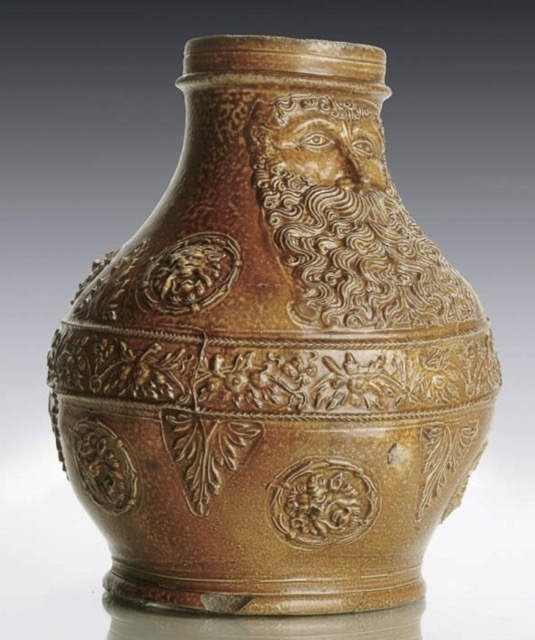
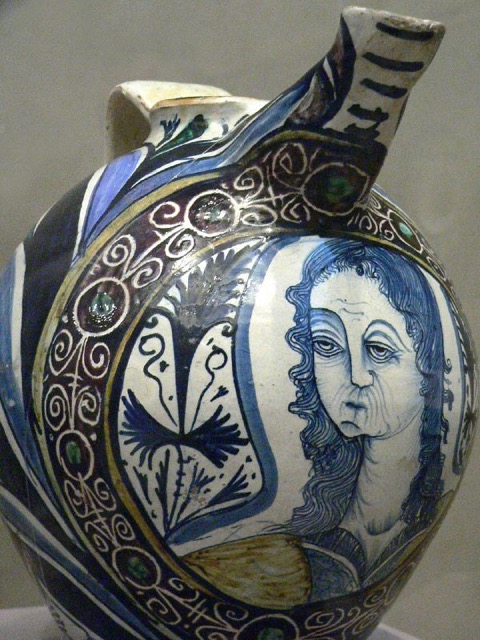
Above on the left we have a so-called salt-glazed stoneware Bartmann jug, from Cologne, ca. 1550, and on the right a 16th century Italian tin-glazed earthenware jug. Below we have a group of late-16th century, English lead-glazed earthenware.
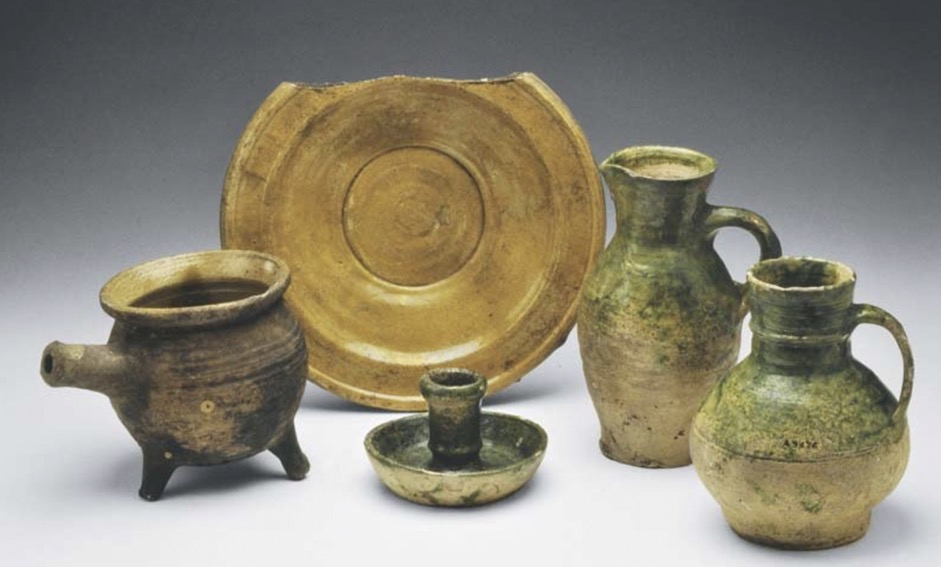
Earthenwares were decorated with coloured slips throughout western Europe during the 16th century, but it was during the 17th and early 18th centuries that 'slipware' became ubiquitous. The slipware which had the greatest impact upon ceramic consumption, and which are therefore most useful to archaeologists, are those manufactured in the Netherlands, Germany, and England. Slipware with "sgraffito" decoration, i.e. with a design scratched through a slip-coat to reveal the body beneath, had been made in the Low Countries until the mid-16th century, but it was the so-called 'slip-trailing' North Holland wares of the later 16th and 17th centuries that dominated European and overseas markets (the object is dipped in pale slip then other colours of slip are trailed over the top in intricate patterns). German slipware which combined trailed and sgraffito decoration were also widely marketed throughout Europe at this time, and even reached North America by the mid-17th century.
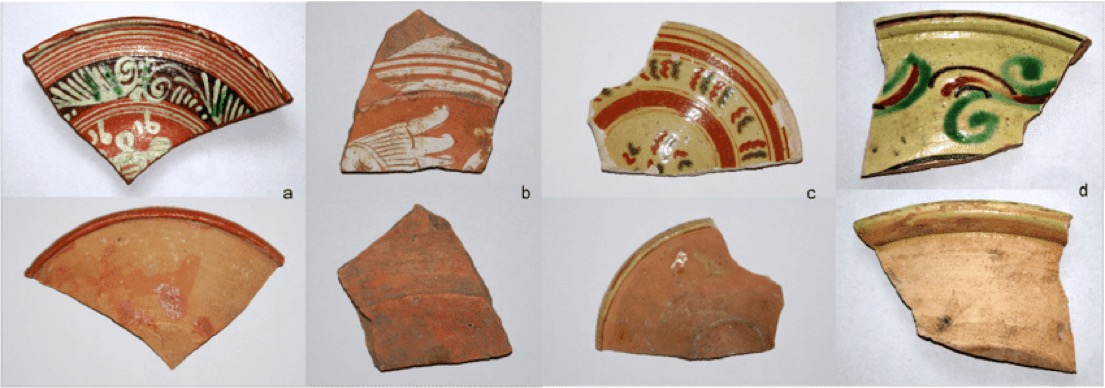
Fragments of early modern slipware (above decorated insides, below unglazed outsides). (a) 17th century Werra ware, probably from Hesse or Lower Saxony, Germany. (b) 17th century Werra ware, biscuit firing, waster sherd from Enkhuizen, The Netherlands. (c) 17th century Weser ware, waster sherd from Voelksen, Lower Saxony, Germany. (d) 18th century Rhenish lead glazed slip ware, waster sherd from Frechen/Cologne, Germany.
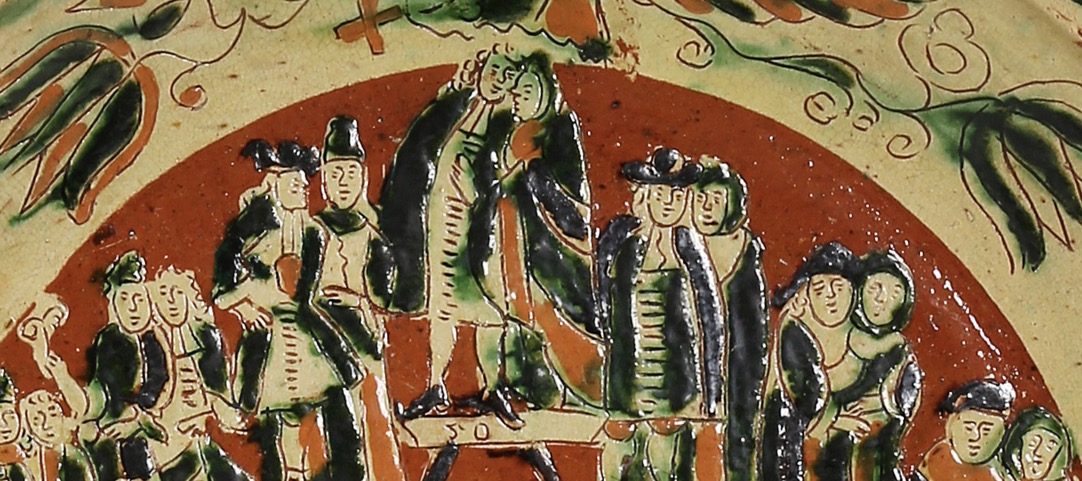
Above we have a detail of a large incised slipware dish made by Gerrit Bonnen from Sevelen, Germany, and dated 1728. The incision is through a cream coloured slip to the red body. The additional decoration is in an ochre slip and green glaze with couples representing the "Ages of Man", from birth to death at 100. It was for sale at £14,000.
During the 17th century, slipware became one of the defining post-medieval ceramic types in England. The sgraffito-decorated slipware of north Devon which had separate biscuit and glaze firings, not hitherto a feature of English earthenware production, suggest a European influence. The main manufacturing centres were the seaports of Bideford and Barnstaple which developed a substantial coastal and overseas trade, supplying Ireland and the Caribbean and North American colonies. Elsewhere in England it was North Holland slipware which influenced manufacture. During the early 17th century so-called 'Metropolitan' slipware, produced predominantly in Harlow in Essex, dominated the market for decorated wares in London and south-east England. Metropolitan slipware with trailed slip motifs of the kind used on the North Holland wares were a catalyst for slipware manufacture throughout much of England. This influence can be seen in major developing industries at, for example, Wrenthorpe in West Yorkshire and in north Staffordshire.
During the second half of the 17th century, north Staffordshire became England’s main slipware-producing centre. Staffordshire’s output was predominantly of decorated wares and these, combined with the migration of potters, had a marked influence on slipware production elsewhere in the country. By the early 18th century, Staffordshire-type slipware were being made in places such as Bristol, Clifton in Cumbria, and Jackfield in Shropshire.
Throughout Europe the production of coarse utilitarian earthenwares (i.e. the "useful" trade) continued alongside that of decorated wares. While these were often for local consumption, the products of some industries were more widely marketed. Dutch redware, English and Welsh black-glazed redware, and olive jars from Seville, for example, had a major impact upon European and colonial markets. As Rhenish stonewares had dominated the European and overseas trade in ceramics in the 16th and 17th centuries, so Staffordshire wares came to define ceramic trade and consumption from the mid-18th century. From the mid-17th century, the north Staffordshire industry was expanding and producing good quality earthenwares and salt-glazed stonewares which are found all over Britain. There is evidence for a limited overseas trade from the 1610's, but by the 1690's Staffordshire ceramics are common finds on Caribbean and North American excavations.
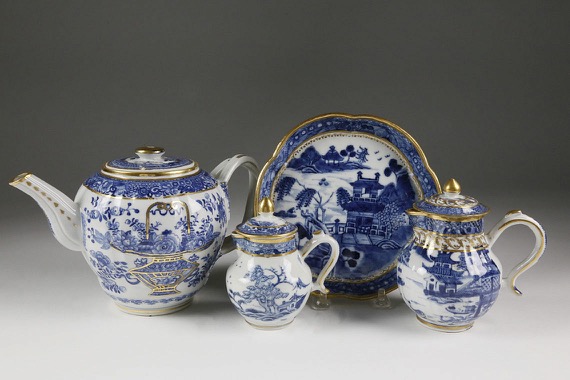
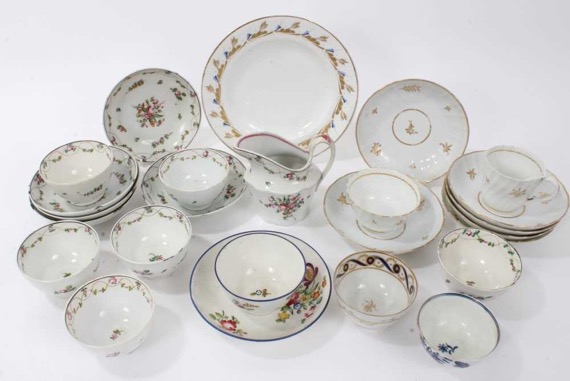
On the left we have 18th century Chinese export teaware, and on the right, a collection of various 18th century English teaware (value £100 to £150).
The greater accessibility of tea and the growing popularity of tea drinking in the early 18th century stimulated a demand for home-produced teaware as affordable alternatives to imported Chinese porcelains which had hitherto been the only teaware available. Around 1720, Staffordshire potters responded to this market opportunity with fine white salt-glazed stonewares and red earthenwares. By the 1740's, tableware of white salt-glazed stoneware competed in price and quality with pewter and fragile tin-glazed earthenware, while at the higher end of the market creamwares challenged the role of porcelain at the tables of the well to do from the 1760's. The Staffordshire ceramics industry was transformed during the 1720's to 1740's, with changes in scale, organisation and manufacturing methods, which ultimately set the tone for pottery production elsewhere in Britain and beyond.
New types of ware required more efficient preparation of clays and new processes, such as lathe-turning, moulding, and separate biscuit and glost firings for earthenwares (glost is a second firing in which the glaze is fused). A growing market demand for white-bodied wares led to the development, during the 1740's, of 'creamware'. White wares required white-firing clays which were imported from Devon and Dorset, while the flint (quartz) used in clay bodies and lead glazes was brought in from the south and east coasts of England. A national supply network operated by dealers and carriers brought these raw materials into the area by sea, river and road, while also facilitating the movement out and export via the seaports of the industry’s finished products.
Several 18th-century production sites have been excavated in north Staffordshire, but the excavation of the factory waster dump of the potter William Greatbatch offers the clearest archaeological evidence for developments within the pottery industry in the later 18th century. Greatbatch’s manufacturing career spanned the years 1762 to 1782, during which time his factory’s wasters were dumped in an adjacent clay pit along with tools, moulds, kiln furniture and saggars (a type of kiln furniture). Documentary evidence provides a limited perspective on this factory, but the excavated ceramics demonstrate without ambiguity the development of this factory’s products and manufacturing processes during a critical twenty-year period in the industry. Wares were recovered in proportions that reflect both a rapidly changing market and the difficulties of manufacture.
Greatbatch was primarily a manufacturer of creamware, although he produced most of the wares typical of this period. His creamwares underwent stylistic changes during the life of the factory. Elaborately moulded and coloured Rococo-style wares made in the form of cauliflowers and pineapples in the 1760's were replaced, in the 1770's, by more restrained vessel forms, often with neo-Classical details. Coloured glazes and under-glaze colours gave way to over-glaze painted decoration which was better suited to the lighter glazes of the later wares. Creamware wasters indicate the establishment of a decorating shop at the factory by the 1770's, but decorated creamware was always a minority product. The pearlware, by contrast, were all decorated, and numerous finds of practice pieces show the decorators’ attempts to copy, in under-glaze blue, the Chinese-style landscape patterns which were typical of this new type of ware. The quantities of pearlware, or 'China glaze', present support the argument for a mid-1770's introduction of this new ware. Pearlware’s visual appearance, with a blue-tinted glaze over a white body, and its initial reliance upon Chinese-style decoration, suggest the deliberate copying of Chinese porcelain, which was still widespread, but expensive.
The success of Staffordshire ceramics during the later 18th century led to the establishment of factories making Staffordshire-type wares in many parts of Britain, in Europe, and in North America. Standardised production developed in part because of the movement of potters, but more significantly because an expanding Staffordshire-based infrastructure supplied everything from moulds to colours and, by the early 19th century, engraved copper plates used in transfer printing. By the mid-19th century machinery, brushes, tissue paper and even kiln furniture were being supplied to factories elsewhere in Britain and beyond.
While creamware was produced into the 19th century, it was pearlware which was to become the earthenware body of the early 19th century, and almost without exception it was decorated in some form. Under-glaze painted decoration in blue or polychrome was common on teaware, while moulded and painted 'shell edge' defined the less expensive tablewares. By ca. 1800, more expensive tea- and tableware carried transfer-printed decoration. Introduced to earthenware manufacture in the 1780's, transfer-printing allowed the mass production of identically decorated wares with images lifted from an engraved copper plate, increasing standardisation of production even further. Printed decoration, at first mainly in blue, but in a range of colours from the late 1820's, underwent stylistic changes throughout the 19th and 20th centuries which can be identified and dated with some accuracy from the collector literature, all the more accurately when a maker’s mark was used. Makers' marks can include a range of useful information, not least of which is the identity of the manufacturer and occasionally the importer. In the case of printed marks, patterns are often named, and a registration mark or number indicates the date of a pattern’s or shape’s registration and is a useful terminus post quem for vessels so marked.
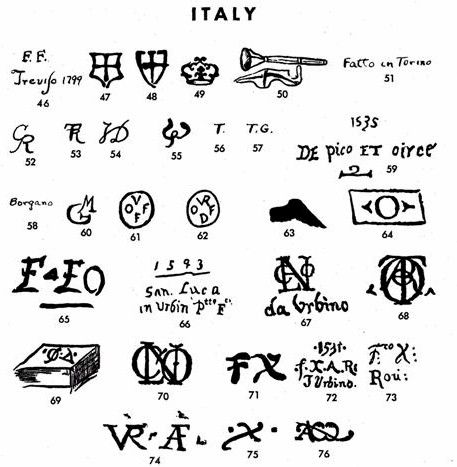

Printed decoration dominated 19th-century pottery production, being used on all earthenware bodies introduced from the 1820's. It was the most expensive type of decoration on earthenware on account of the processes involved in its manufacture.
While archaeologists define white-bodied earthenwares as creamware, pearlware or, from ca. 1830, 'whiteware', 19th-century manufacturers defined their products by their decoration, i.e. printed, painted, dipped and edged. A growing preference for decoration during the 19th century significantly changed the composition of excavated ceramic assemblages and has rendered them more open to interpretative analysis using the relative cost of wares to determine spend-profiles. However, not all wares were decorated, and from the 1850's the popularity of transfer-printed wares declined in the Americas. At this time the North American market came to favour moulded 'ironstone china' or 'white granite', a type which owes little to the patent ironstone wares of the earlier 19th century, and which was simply a heavy-duty earthenware. White granite wares were durable and weathered shipment to the country’s frontier regions. But they were also stylish, emulating the more expensive white French porcelains that were then in vogue. White granite is widespread in archaeological deposits in North America and, more recently, its production and consumption in the United Kingdom have been highlighted.

The production of many British factories also included ceramic building materials. In the late 18th century, painted and transfer-printed tin-glazed earthenware tiles were in high demand for use in fireplace surrounds. Later, Victorian tiles were generally white-bodied earthenwares with transfer-printed or slip-glazed decoration and were used in fireplaces, as furniture insets, and to cover wall surfaces. Other Victorian era products included encaustic tiles, architectural terracotta and brickwork. Architectural ceramics opened up the design possibilities and technology available to architects in Great Britain and its sphere of influence. Buildings were constructed out of refined and virtually impenetrable terracotta, using custom- and ready-made components, frequently with intricate moulded designs. From the 1870's, terracotta became the most important building material for public and commercial buildings in urban Great Britain and in many parts of the world. A variety of architectural components, e.g. chimney pots, door and window frames, trusses, finials and other details, drain pipes, roofing tiles, and garden ornaments, were mass produced in terracotta, marketed in catalogues, and used to decorate houses of all market levels.
Porcelains made in Europe from the early 18th century have not yet been mentioned. The amount of collector literature devoted to British and European porcelains exaggerates their contemporary significance, for these were expensive wares which would have been beyond the reach of all but the wealthy. Of the English porcelains, those which are likely to have had a wider distribution were blue-printed wares from factories such as Worcester and Caughley. Excavations on a number of 18th-century porcelain factories, such as Longton Hall in Staffordshire and Limehouse, London, have shed light upon the operations of individual factories and the processes employed there, but have added little to an understanding of the wider contemporary role of porcelain.
In one area of porcelain production, Britain was to have a significant impact upon the international market. Bone china, introduced in the 1790's, was rapidly adopted by Staffordshire factories and was soon established as the British porcelain. A 'soft paste' porcelain, with a body made from a mixture of China clay, China stone and calcined animal bone, it was easily worked, extremely white and very translucent. As such it could be adapted to both the higher and lower ends of the market, and is commonly found as teaware in 19th- and 20th-century contexts with a limited range of simple decoration, or with no decoration whatsoever.
British and European fondness for transfer-printed decoration did not decline during the later 19th century. Printed patterns were frequently embellished with additional painted decoration to create multi-coloured designs. Wares decorated in this manner with Aesthetic and later Aesthetic-derived motifs were popular from the 1870's to the early-1900's when the over-glaze lithographic transfer, or 'decal', effectively replaced under-glaze transfer printing as the major method of decorating ceramics. The litho transfer process allows for the decoration of ceramics with intricate polychrome designs that mirror fine hand-painting, at prices within the means of the average consumer. Specialist manufacturers produced the lithographic designs which were sold in sheets. At first these were backed with paper and covered with varnish. The designs were soaked in water to soften and remove the backing paper, a sticky size was painted on the ware and the designs applied and rubbed down. The varnish was burned away during firing in an enamel kiln, leaving the completed design. This 'stick-down' lithography was replaced from the 1950's by 'slide' or 'water slide' lithography, in which prints were printed onto plastic film and soaked in water to loosen the paper backing. The plastic film carrying the design was slid onto the pot and rubbed down, then burned away through firing.
Traditional European ceramics lost ground to British industrially made wares during the 18th and 19th centuries, but manufacturers continued to supply local and regional markets with a range of familiar utilitarian products and ornamental wares for which there was no outside competition. British production had increased in scale during the 19th century. The industry’s success was based upon decorated white-bodied wares of a reasonable quality, which were affordable by the majority of consumers. Their success resulted in emulation at a number of European factories, such as that of Petrus Regout of Maastricht in the Netherlands which produced British-type whiteware for European and overseas markets for much of the 19th and 20th centuries. Britain retained its firm grip on the American ceramic market until the last decades of the 19th century, when Japanese, German, French, and other European hard-paste porcelains were vying for a share. Restrictive tariffs were partly to blame, but consumers were influenced by a combination of factors when making their choices. These porcelains, which are widely found in archaeological deposits from the late 1800's onwards, offered porcelain elegance along with enamelling and gilding (later frequently with lithographic transfers), all at a lower cost. Also popular were porcelain 'blanks' which were sold to amateur china painters who decorated them in various styles. In Britain, manufacturing processes changed little between the mid-19th century and the mid-20th century, although a degree of mechanisation was gradually introduced as legislation restricted the use of child labour from the 1860's. The manufacture of wares by slip casting became more widespread after 1900, and there was a gradual move towards lead-free glazes. Gas and electric 'tunnel kilns' gradually replaced coal-fired ovens. Ceramic literature focuses upon the new stylish 'art-deco' wares which appeared during the 1930's, and upon the designers and artists responsible for them. In reality, however, British manufacturers remained very conservative in the wares that they produced, relying for the most part upon what had been popular with customers for fifty or a hundred years.
Earthenware



So earthenware is a mix of clay, kaolin, quartz and feldspar and is one of the oldest materials used for pottery. Below we will look rapidly at different types of earthenware, starting with terracotta which is a clay-based unglazed or glazed ceramic that when fired remains porous. Think flowerpots though to the Terracotta Army.

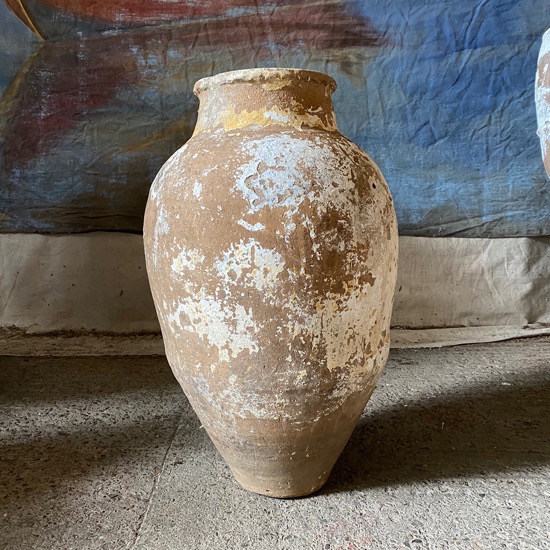
Above on the left we have a pair of French Renaissance terracotta garden figures, that retailed for €4,000. On the right we have an 18th century olive jar, retailing for around €250.

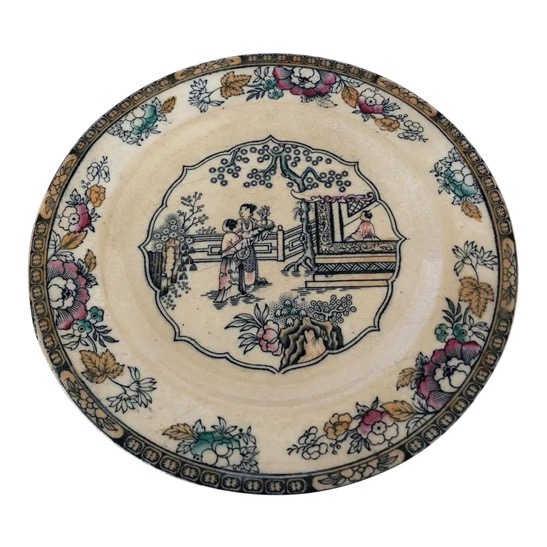
Ironstone ware is a type of vitreous pottery first made in the England in the late 18th century. Often considered earthenware, but its appearance and properties are similar to stoneware. It was a cheaper, mass-produced alternative to porcelain. Above on the left we have English ironstone cachepots from ca. 1880, which can retail for in excess of €100 each. On the right we have a late-19th century English ironstone salad plate, which would retail for perhaps €50 for a set of six.

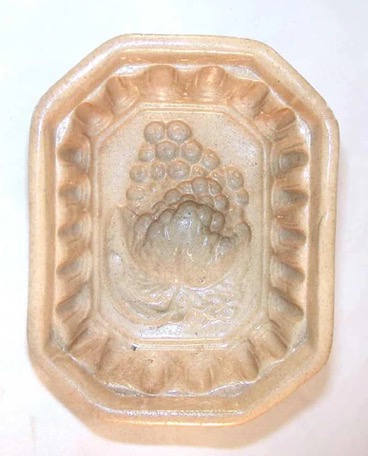
Yellowware is a type of earthenware named after the yellow clay used, and it has its origins in the England in the late 18th century. It was often used for kitchen ware, with bowls for cooling milk, mixing, batter & bread making, jars for preserves, crocks for beer, and moulds. Above on the left we have a set of five rare bowls from Hull Pottery dating from the 1920's, which could retail as a collection for in excess of €250. On the right we have an early 20th century yellowware mould retailing for around €50.

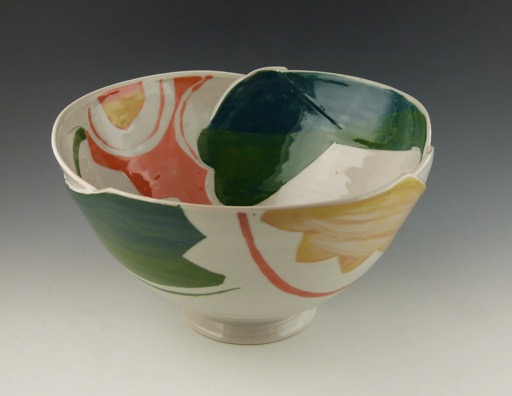
Tin-glazed pottery is covered in a glaze containing tin oxide which is white, shiny and opaque and dates from the 9th century in Iraq. The body would normally be made of a red or buff coloured earthenware, and the use of the glaze in Europe was designed to imitate Chinese porcelain. It would usually be decorated (check out the two modern-day examples above). The decorated tin-glaze from Renaissance Italy was sometimes called maiolica, whereas in the Netherlands it was known as Delftware, and in France is was known as faïence. It was also the basis of the Portuguese Azulejo.
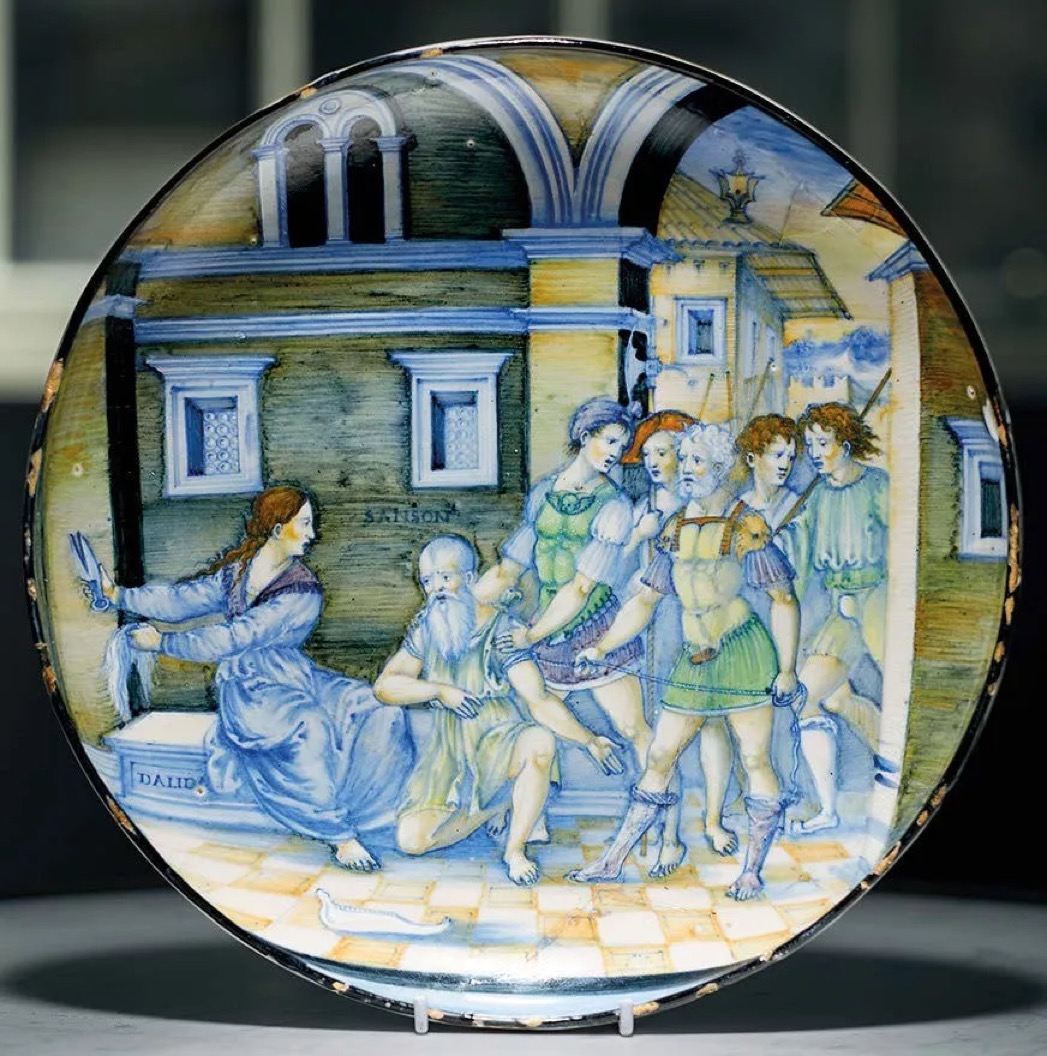
Maiolica (or Majolica) is a highly coloured tin-glazed earthenware dating from the Renaissance. Above is a rare 27 cm diameter dish depicting Delilah and Samson (inscribed Dalida and Sanson). It is an early example by the 16th century artist Nicola di Gabriele Sbraghe (or Sbraga), known as Nicola da Urbino (ca.1480-1538), who is acknowledged as the master of the "istoriato" style of maiolica decoration. Initially valued at £80,000 to £120,000 it was finally auctioned in 2021 for £1.26m including premium. Below is a fragment of another Italian Maiolica "istoriato" dish from the first-half of the 16th century. It was sold at auction in 2020 for £4,600.
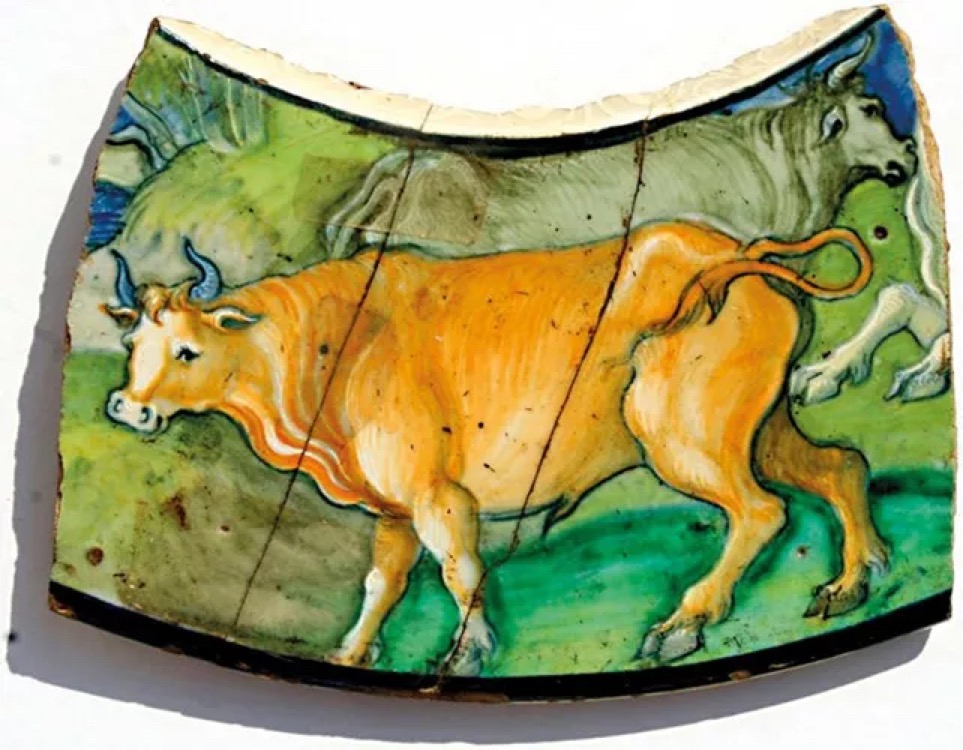
The story goes that Islamic potters originally developed the white tin-glaze decorative technique during the Middle Ages. The development of the technique is believed to have been inspired by the trade of finely decorated Chinese Porcelain. From Persia, the tin-glaze decorating technique spread into Spain where it was developed into what is known as Hispano-Moresque ware. Below we have the "Bowl with a Horseman Spearing a Serpent" from The Met. It dates from the late 1300's or early 1400's, and probably comes from the city of Málaga (in the Emirate of Granada at the time), which was one of the earliest centres for the production of lustreware in Spain. The virtuosity of its wares, notable for their dense patterns of shimmering gold, often accented with blue, was renowned.
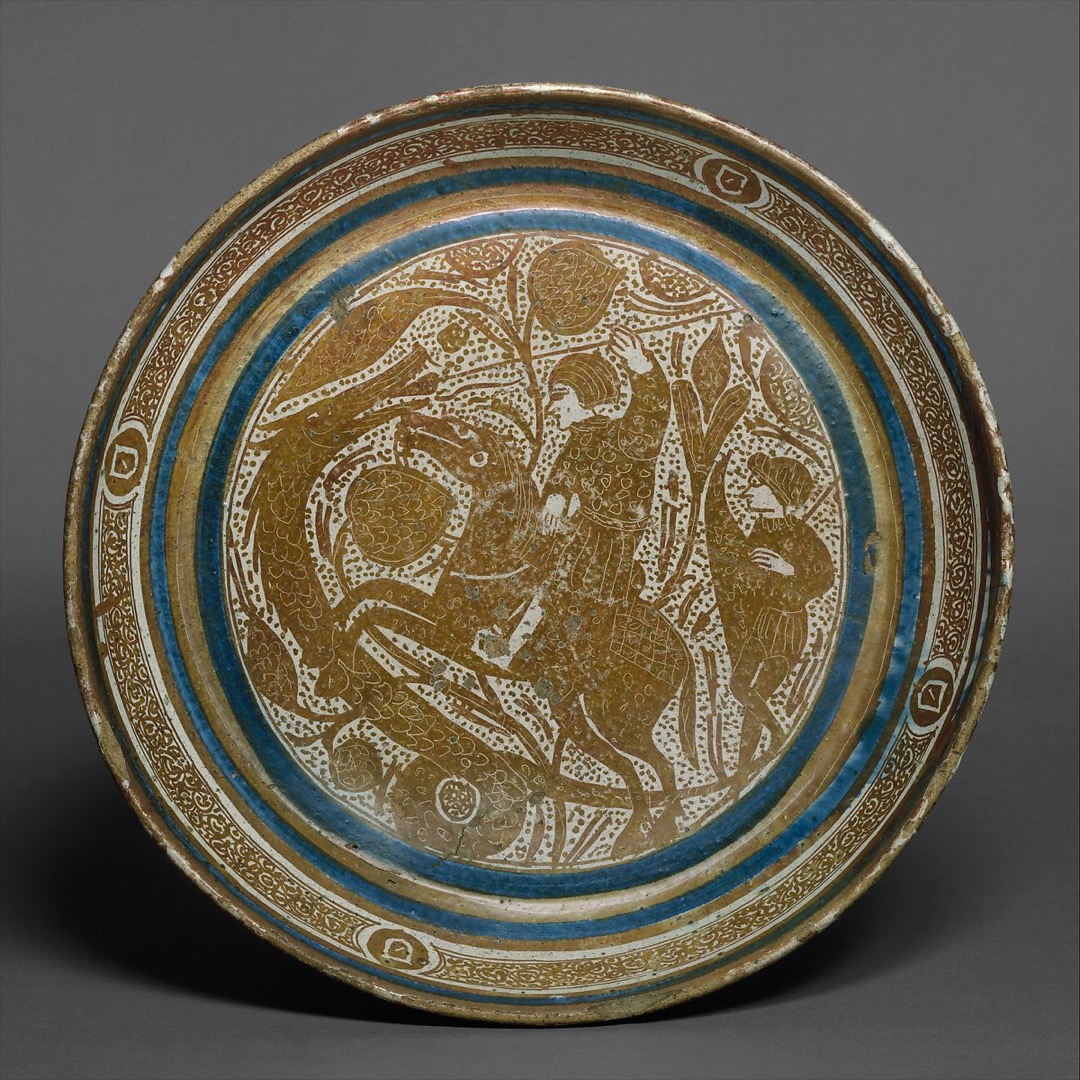
Spanish tin-glaze pottery was imported into Italy during the 11th and 12th centuries. About 1200 AD the Italian potters adapted the technique and eventually called it "maiolica". The name "maiolica" was derived from where the tin-glaze ware was imported, Majorca in Spain. The Spanish, Italians and Persians also produced a special type of maiolica called lustreware. Lustreware required applying an iridescent film onto already fired tin-glaze pottery. A third "reduced" firing technique was required for this type of decoration. The lustre technique was difficult to do and had a high failure rate. Some pottery centres failed to produce lustreware successfully. Originally the Italians used the term "maiolica" only to refer to vessels decorated with lustreware but eventually the term was applied to all decorated tin-glaze wares. At first the Italians were limited to the colours copper green and manganese brown/purple. Pieces with this green and brown decoration are known as "archaic maiolica". Blue, yellow and other colours were introduced later, mostly in the 15th and 16th centuries. Maiolica production centres in Italy created lavishly decorated plates and bowls for many different consumer markets. There are many surviving examples of pieces created for wealthy patrons, and many pieces were created for special occasions such as marriages or births. Maiolica jars were produced in great numbers for hospitals and pharmacies. Maiolica was also produced for export to other parts of Europe and for the pilgrim tourist trade.

The small Umbrian hill town of Deruta, about 19 km south of Perugia, was one of Italy’s most important centres for the production of 16th-century maiolica (tin-glazed earthenware). Among the wares for which Deruta was most famous are large, concave dishes with flat rims, painted at the centre with a wide variety of sacred and profane subjects. On most examples, the rim, which neatly frames the central image, is treated independently from the centre, and its decoration either circles the rim or consists of repeating radial segments of varying width and design. These works of art range from about 38 cm to 44 cm in diameter, and are commonly referred to in the specialist literature as "piatti da pompa", i.e. show or display dishes. The majority of them were made between 1500 and 1560, and because they remained in fashion for such a long time, and changed little stylistically, they are particularly difficult to date with any precision.
Designs on many Deruta "piatti da pompa" reflect the influence of local artists such as Pinturicchio (1454-1513) and Piertro Perugino (ca. 1446-1523). They and their workshops executed a host of commissions throughout Umbria and beyond, and many "bella donna" profiles derive from the graceful female types pervasive in Pinturicchio’s frescos. Although it has been suggested, though never proven, that Pinturicchio was married to a Deruta potter’s daughter, it seems likely that he, Perugino, and their respective workshops collaborated with local potters. Drawings, or drawings of drawings, must have existed for works beyond the potters’ reach, or for works located in what were then inaccessible places, such as the Vatican. The near identical pose and appearance of secular and religious figures on multiple Deruta dishes suggests that certain designs were serially produced from a workshop’s stock repertory of cartoons, and typically transferred to the dishes through a pounce technique that involved pricking a cartoon and tapping the holes with a porous bag filled with dark chalk or charcoal.
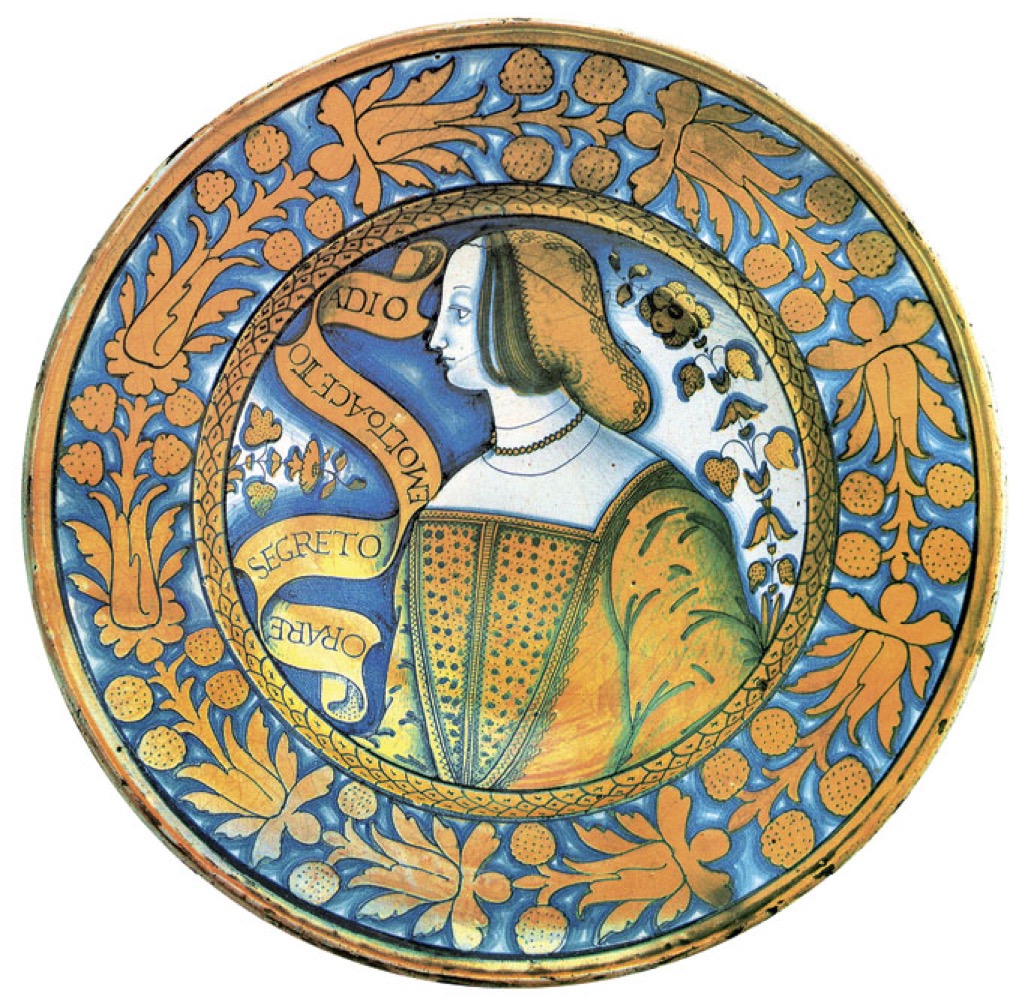
A notable number of inscribed dishes are hybrids, since they pair religious subjects with secular mottos, or the opposite, secular images (usually "belle donne") with pious inscriptions. The union of image and text that do not explicitly relate to one another could mean that potters were executing custom orders, but more likely it speaks to workshop practices, i.e. using what sources were available, what was deemed attractive or saleable, and what afforded variety. The above dish has a "bella donna" accompanied by the inscription ‘ORARE SEGRETO E MOLTO ACETTO A DIO’ (To pray in secret is most acceptable to God), reminding its owner, presumably a woman, to pray alone or in the private spaces of the home, such as the bedchamber.
In an interesting aside it was noted that in the 1540's, Italian potters in Faenza, having mastered the tin-glaze tradition, invented a distinctive polychrome style that found ready customers among the wealthy classes. Italian princes and gentleman, who had long eaten off silver plates and drunk out of gold goblets, craved something new and different. White ceramics fit the bill, the shapes, designs and glazes were innovative, and the pale palette made food look and taste better than metallic dishes. The Italians had also adopted haute cuisine, with new types of food served in multiple courses. The shift from eating to dining was accompanied by the rise of table manners and the need for specialised vessels to present the food. People no longer ate with their fingers or from shared bowls. Specialised dining equipage, including this new type of majolica plates and dishes, figured into the game of status competition. After firing this new design was shiny and sparkling, thus conveying a strong sense of hygiene, which at the time was another luxury reserved for the rich.
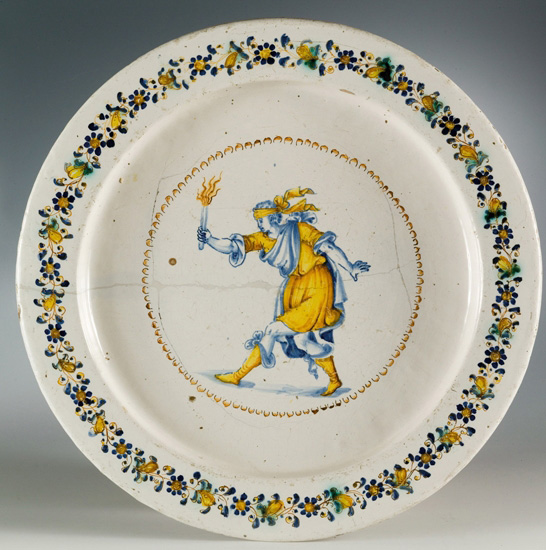
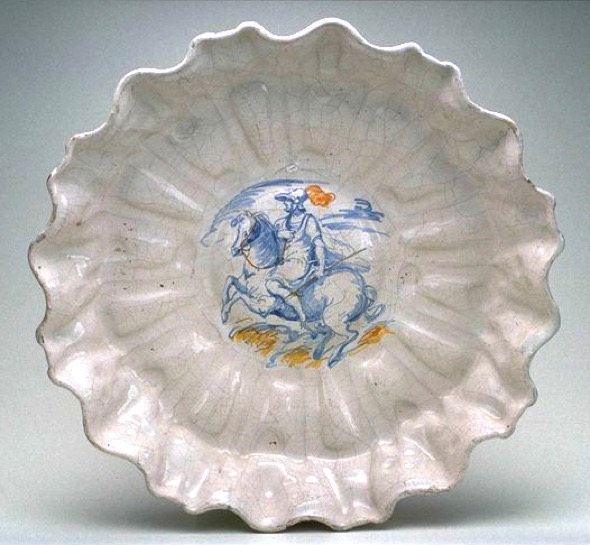
In the mid-sized city of Faenza and a handful of rural places, majolica workshops adapted to meet the need. Although majolica represented a very small percentage of Renaissance Italy’s artistic output, it had a broad influence in Europe over the next few centuries. Initially known as the "pottery from Faenza" or faentini, the whites became so famous that French people shortened their name to “faience”.
The plate on the right was made by Virgilio Calamelli (d. 1570), who was also from Faenza and was one of the founders of the "Stile Compendiario", a style in which the decoration is created rapidly, with few elements and few colours.
The maiolica technique eventually spread to Northern Europe. Italian potters set up business in what is now modern Belgium and Holland in the beginning of the 16th century. Flemish maiolica floor tiles were exported to England during the reign of Henry VIII. When war broke out between the Spanish and the Dutch, Antwerp was sacked a number of times and some maiolica potters moved into Holland and England. In Holland, the technique evolved into modern blue and white Delftware. In England, the technique was known as "tin-glaze" earthenware, maiolica or majolica. A piece of tin-glaze earthenware with an image of the Tower of London was presented to Elizabeth I by English potters about 1600.
Below we can see a pair of 19th century English Majolica harvest garden seats by John Adams. & Co. which were exhibited at the London International Exhibition in 1871 (retail price €2,500). Then we have a 19th century French majolica lidded teapot with green ground and corn motifs (retail ca. €250), and finally we have a German Karlsruher Majolika, from the 1940's (retail ca. €250).
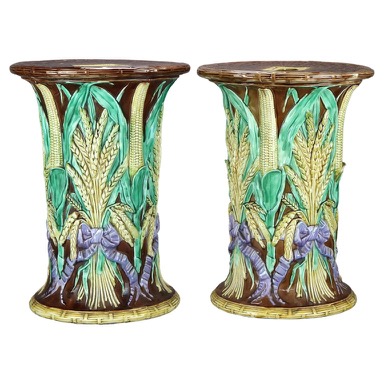
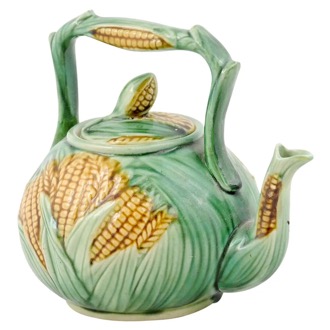
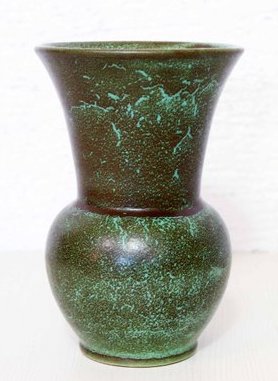
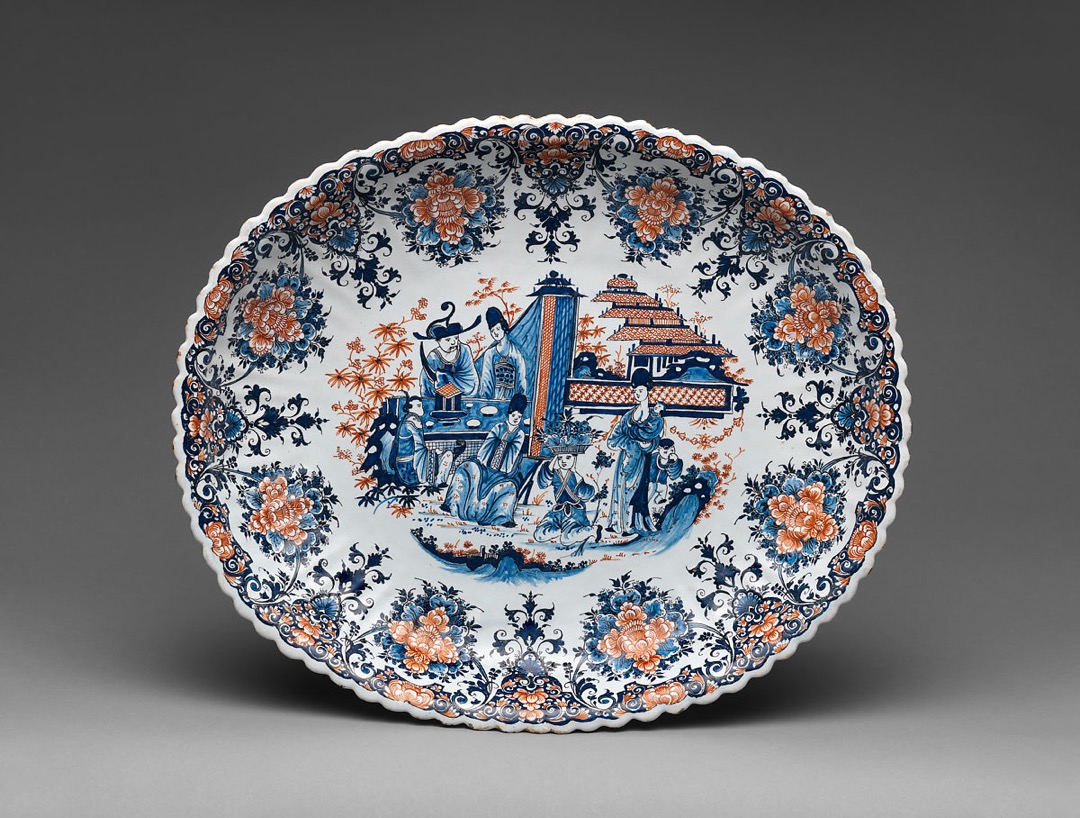
Faïence describes a white tin-glazed pottery on a delicate pale buff earthenware body. Above, from the collection of The Met, we have a plateau from Rouen, dated ca. 1720. Below we have a portrait plate attributed to the Quimper pottery (retail ca. €130). Then there is a blue and white pig, also from Quimper, and dated 1881 (retail ca. €130). Finally we have a tall hand-painted Desvres vase marked Rouen, ca. 1920 (retail €300).


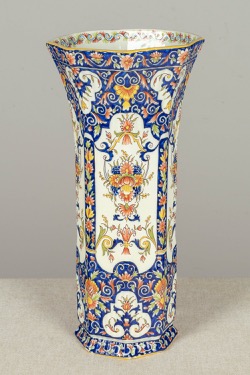

Azulejo is a form of Portuguese and Spanish painted tin-glazed ceramic tilework. They are an ornamental art form, but also had a specific functional capacity like temperature control in homes. You can find them on the interior and exterior of churches, palaces, ordinary houses, schools, and nowadays, restaurants, bars and even railways or subway stations. There is also a tradition of their production in former Portuguese and Spanish colonies, and they still constitute a major aspect of Portuguese architecture to this day and are fixtures of buildings across Portugal and its former territories. Many azulejos chronicle major historical and cultural aspects of Portuguese history.
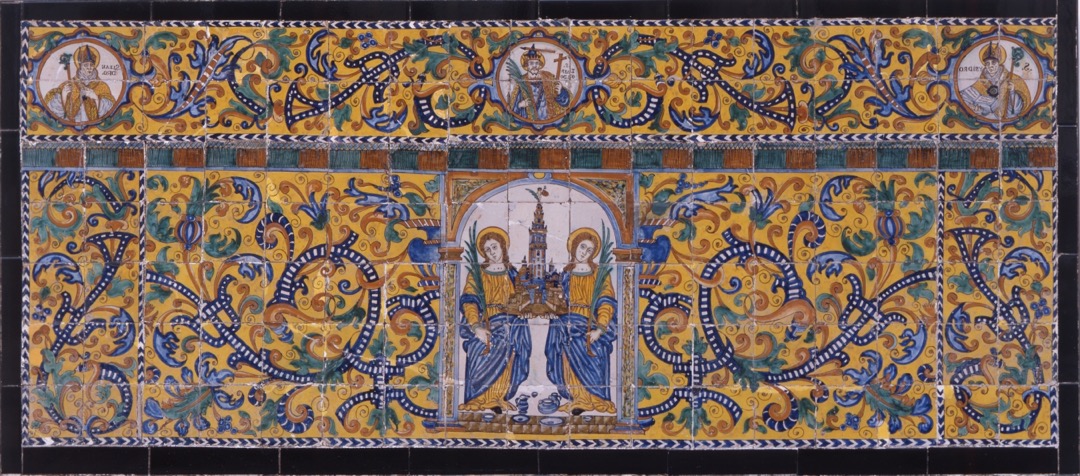
The word azulejo is derived from the Arabic الزليج (al-zillīj): zellij, meaning "polished stone", because the original idea was to imitate the Byzantine and Roman mosaics. The tiles shows unmistakable Arab influences, with interlocking curvilinear, geometric or floral motifs. The craft of zellige is still in use in the Arab world in two main traditions the "Egyptian Zalij" and the "Moroccan Zellige", the latter being the most famous.
The Spanish city of Seville became a major centre of the Hispano-Moresque tile industry. The earliest azulejos in the 13th century were "alicatados" (panels of tile-mosaic). Tiles were glazed in a single colour, cut into geometric shapes, and assembled to form geometric patterns. The old techniques of "cuerda seca" ('dry cord') and "cuenca" were developed in Seville in the 15th century. "Cuerda seca" is the use of a greasy substance mixed with a dark pigment to define the outline of the different colours on a tile, and stop them running into each other. "Cuenca" is a tile made by pressing a mould into a clay slab to create a raised outline with hollows between. These tiles were often used to create boarders, and may have been based on the Spanish handwoven floor covers from Cuenca. These techniques were introduced into Portugal by Manuel I after a visit to Seville in 1503. They were applied on walls and used for paving floors, and the Portuguese adopted the Moorish tradition of "horror vacui" (fear of empty spaces) and covered the walls completely with azulejos.

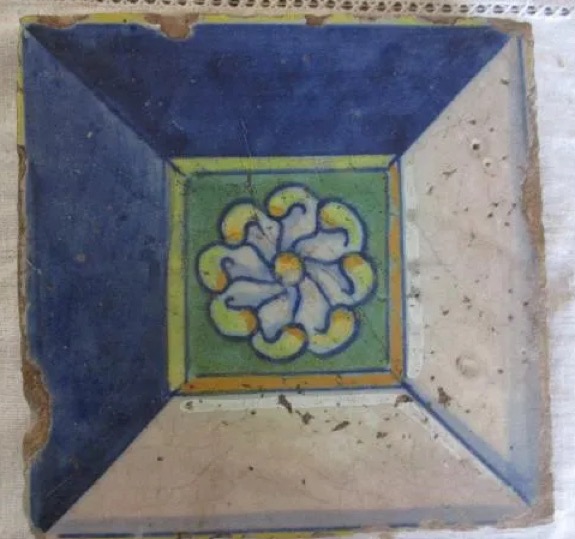
On the left, the four 18th century Valencian tiles sold for €20, whereas on the right, a single 17th century Valencian tile sold for €100. Below we have a monumental 18th century 3-piece panel offered for ca. €25,000.

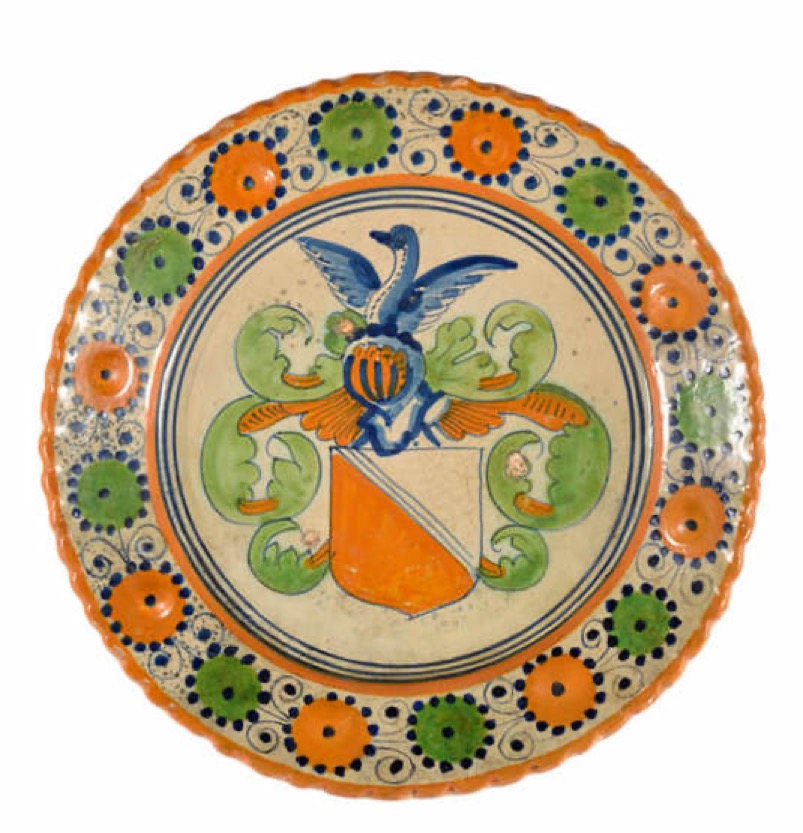
Delftware is a blue and white tin-glazed pottery (plates, ornaments and tiles) made in Delft during the 17th and 18th centuries. However, they had already been making tin-glazed Italian style maiolica from 1512 (the above plate from Haarlem dates from 1620-40). The fashion for blue and white pottery all started when the first consignments of Oriental porcelain arrived in the Dutch Republic (1588-1795) in the early 17th century. The Dutch East India Company maintained a network that linked trading posts in Asia, where it bought Chinese porcelain and other goods. The porcelain was an instant success in the Netherlands, and soon became hugely popular among the elite. Potters in several Dutch towns soon attempted to produce the best possible imitations (ca. 1620). It was not possible to make real porcelain there, as the main ingredient, a special kind of clay was not available. The copies were therefore based on a technique introduced by potters in Antwerp. This technique involved adding tin to the glaze, which made it white. The technique was a very old one, which probably came to them from the Middle East via Spain. Flemish potters who settled in Dutch towns like Haarlem, Amsterdam and Delft after the fall of Antwerp (1587) introduced it to the Netherlands. They made coarse domestic objects (plates, platters and bowls) that were tin-glazed and painted on one side. Delft potters managed to make their pots thin, with a clean white surface and glossy finish. The bright blue paintwork and shapes were copied from Chinese porcelain. The earthenware objects looked so good that they were referred to as Delft 'porceleyn'. Although the Antwerp potters settled in several towns and cities in the Netherlands, including Haarlem, Gouda and Rotterdam, it was eventually those in Delft who improved their technique and made earthenware that looked like porcelain. Delft has a favourable geographical position on the Schie river, which connected it with the Dutch rivers area where some of the clay for the pottery was obtained, and with the major trading centres in the west of the country which accounted for a large proportion of the market for Dutch Delftware. They, in turn, had links to the international market for Dutch Delftware, namely England, France, Germany and the Southern Low Countries. The pottery industry in Delft was in the hands of a small number of families who passed on their knowledge of the techniques to the next generation, and kept it secret. Furthermore, there was a branch of the Dutch East India Company in Delft, which gave the residents of the town direct access to Chinese porcelain from Asia. Dutch Delftware became a cheaper alternative to real porcelain. It was in great demand and by 1625 there were already eight workshops and potteries making only Dutch Delftware. Below we have a blue and white "Kraak"-style large dish, ca. 1680-1685, from the Samuel van Eenhoorn, the owner of De Grieksche A (The Greek A) Factory from 1678 to 1685.
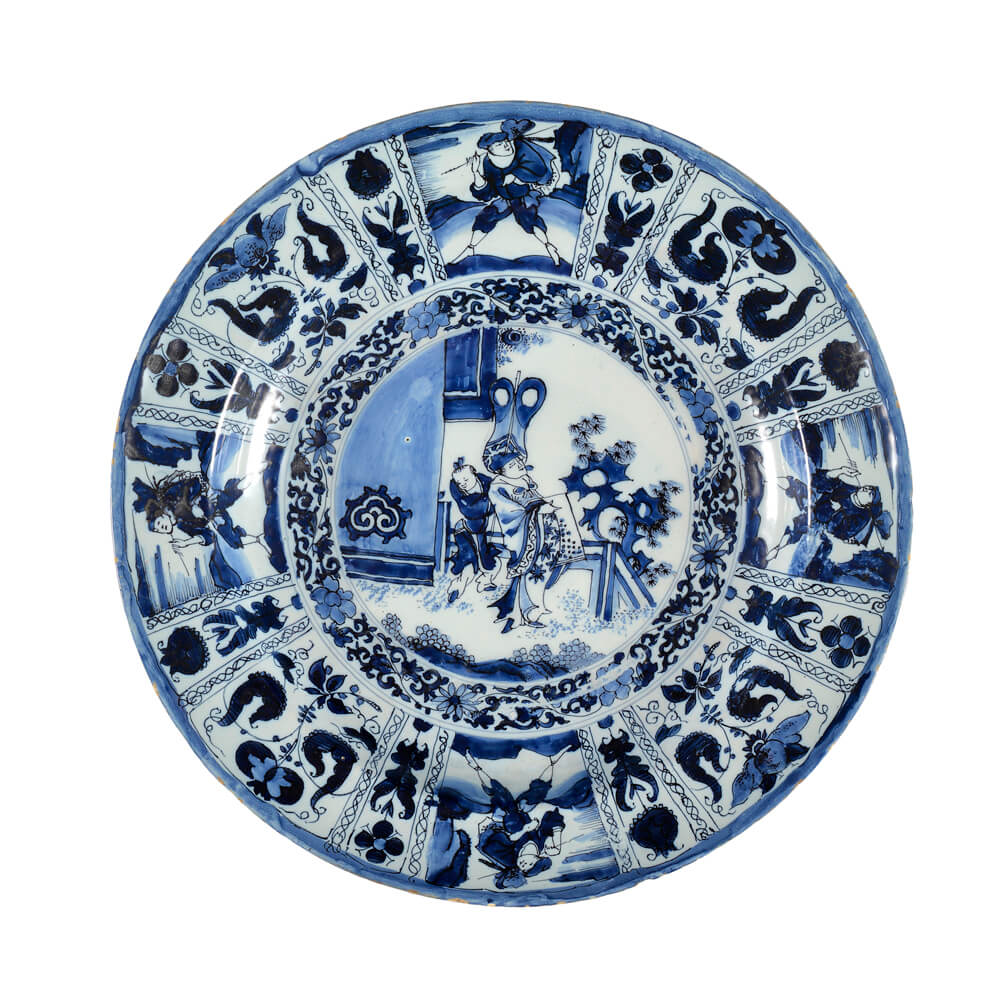
The centre shows a Chinese dignitary holding a scroll and standing before his attendant bearing a large fan in a fenced garden near rocks and pines, the well encircled by a flowering vine and foliate-scroll border. The cavetto and rim consists of a wide border of four fan-shaped panels depicting a man striding with a knapsack over his shoulder, alternating with four fan-shaped floral panels, all separated by narrow floral panels edged with 'cable' bands.
At the height of the industry, around 1700, there were 34 workshops and potteries in the town. They produced millions of objects a year and their products were sold all over the world. But this golden age could not last forever. Cheaper products competed with Dutch Delftware and became a growing threat. England and France were keen to boost their own economies and introduced a ban on imports, robbing Delft of a large market for its products. In the early 18th century, moreover, the first real European porcelain was produced in Germany. At the same time, porcelain from China grew steadily cheaper. Eventually it was English creamware that had the biggest impact on sales of Dutch Delftware. The cream-coloured English earthenware was harder and cheaper than Delftware, so it was ideal for everyday use. Since around 90% of Dutch Delftware was also for everyday use, creamware presented serious competition. By the end of the 18th century only eleven potteries were still in operation in Delft.
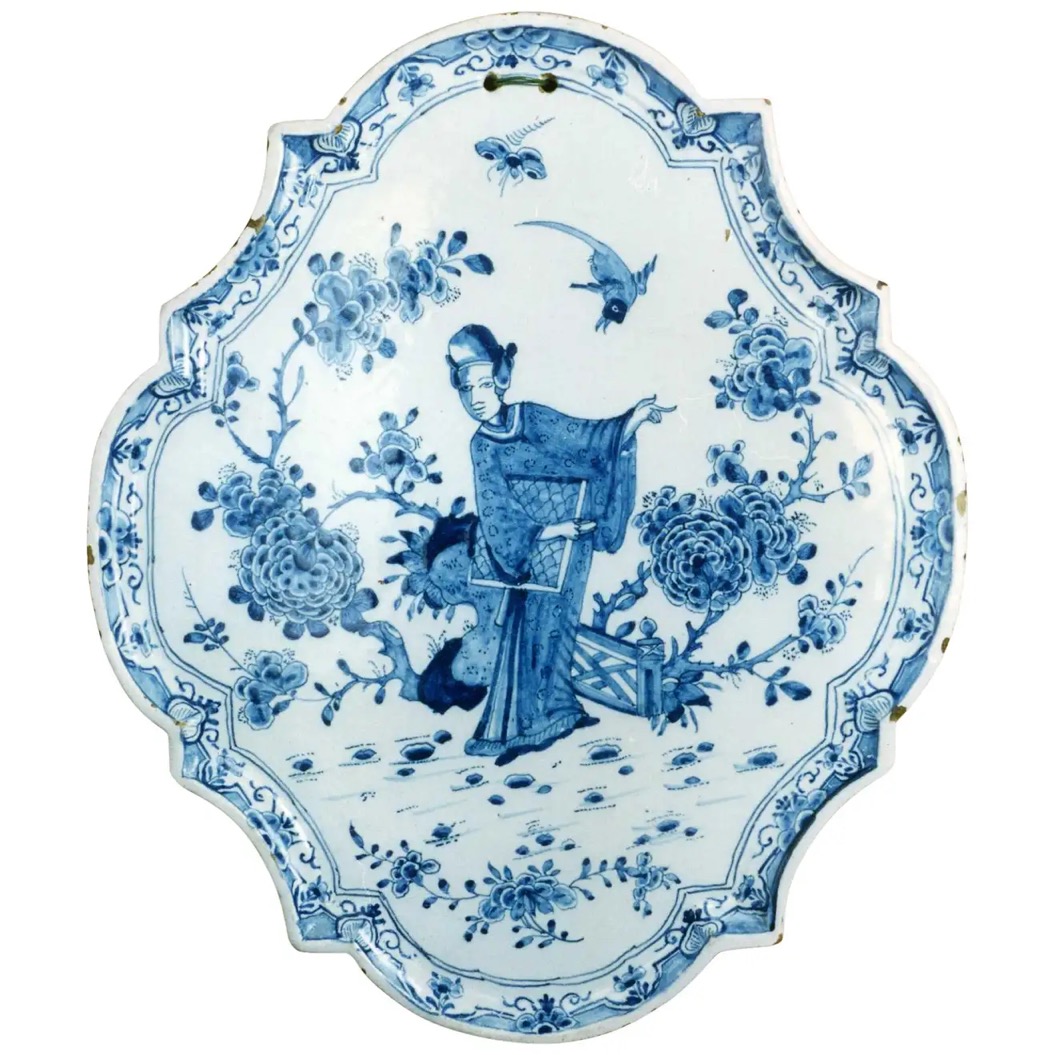
Above we have a restored Delftware wall plaque, dating to the mid-18th century, which would retail for in excess of €4,000. Below we have a pair of 19th century Delftware bottle vases that retailed for ca. €5,000.
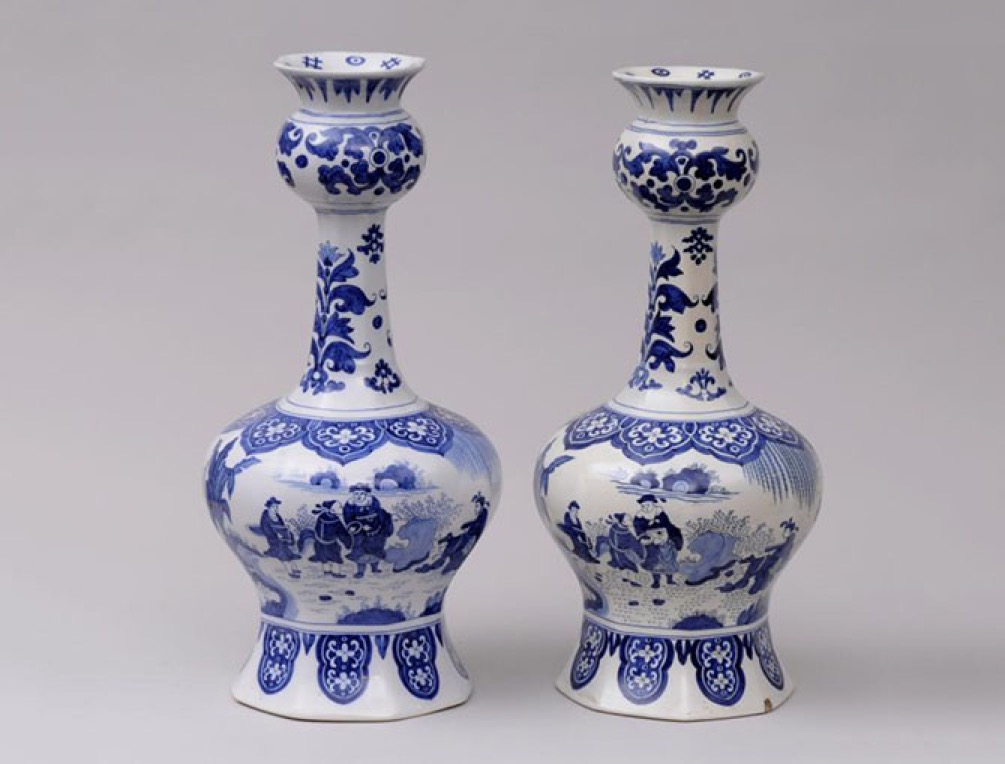
The first Delft pieces were often left unmarked, because markings were not as common as they are today. Early designs were painted completely by hand, and that showed in the inconsistency of lines or other slight imperfections. Early pieces included tea sets, vases, decanters, and decorative tiles.
Today markings on the bottom of Delft pieces will often say "hand-painted in Holland" along with any number of variations of the phrase "Delft blue" in either Dutch or English. However, many modern pieces are not hand-painted at all, but are instead made by transfer and stamp. The phrase "Delfts Blauw" is often seen on items and indicates modern provenance. Around 1900 markings were "Delft" with no "s". Prior to 1900, it was hit or miss with hallmarks because many companies simply didn’t mark pieces at all. Just as there was not one type of blue, there was never a Delft Blue company. The name instead refers to the type of decoration. So this type of mark is very much a modern one.
Aside from markings there are other clues to tell modern or fake pieces from the real thing. Check for signs of a transfer or stamp on a piece that claims to be hand-painted, as this is a dead giveaway that the piece is not authentic. The lines of a copper transfer or the dot matrix of a printed design are two obvious signs, but you must look closely to discern these details.
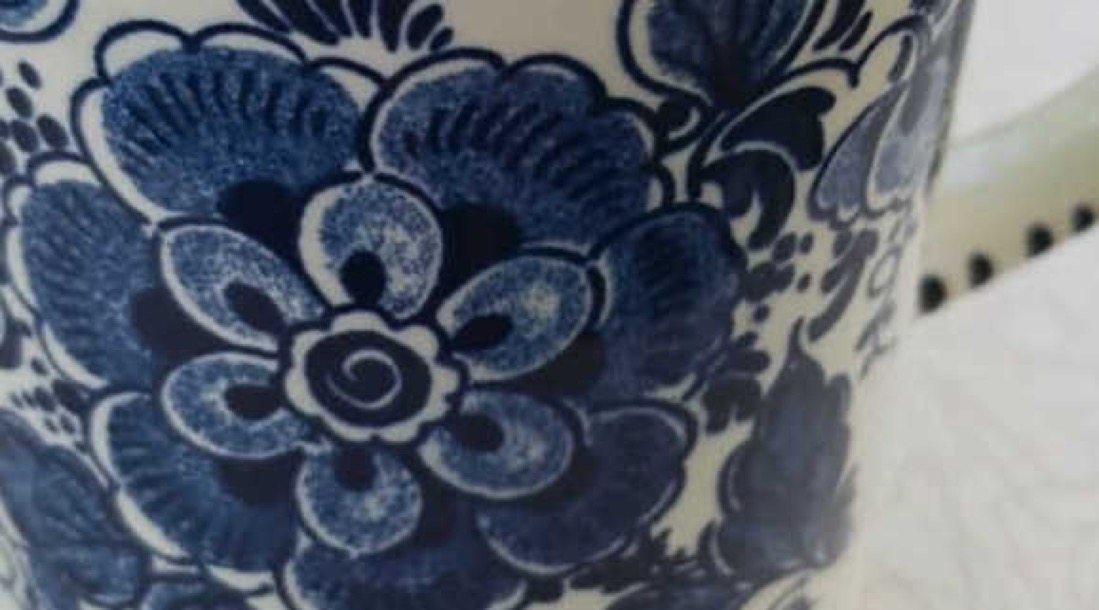
Looking closely you can often see a dot matrix design, done in the style of hand-painted pieces. Condition is another way to tell how old a piece is. Minor chips which have either darkened over time or which reveal the true colour of the pottery, as well as deep crazing are often found on very old pieces of Delftware.

Authentic antique decoration will show the brushstrokes. If a piece looks historic in design and is being sold as an antique, yet bears little patina of use then it is very likely to be modern or fake.
Over the years a prosperous market for fakes has sprung up. Tourists who unwittingly buy these fakes, bring them home, and later they end up in antique stores and flea markets posing as the real thing. Founded in 1834, the Royal Sphinx company in Maastricht was a key producer, despite being many miles from Delft. Delftware is often known as Royal Delft, sometimes bearing a crown on the bottom. But, this doesn’t mean it is original. This symbol has been used by many modern companies over the years. Another popular brand is Koninklijke De Porceleyne Fles, founded in 1635 and still in business today. The brand’s hallmark shows a pot above their symbol, but this has only been in use since 1879. The company also goes by the term Royal, since they were used by the royal family of the Netherlands. This is the ubiquitous maker of Delft blue and the reason many people refer to Delftware generally as Royal Delft regardless of brand.
Today the term "Delftware" can apply to pottery made in the Netherlands or as English Delftware, where the Dutch technique of using tin-fired clay was also adopted. This might be a bit confusing but the main thing to be aware of is the time in which it was made.


On the left we have a very rare commemorative plate with portraits of King William and Queen Mary. It dates from 1795 and is the work of the London potters probably from the Vauxhall area. On the right we have an English Delftware octagonal plate dated to 1687, which was sold in 2015 for €7,500.
Creamware is a cream coloured earthenware created about 1750 and used for domestic ware. Wedgwood lightened the cream colour to a bluish white using cobalt in a lead over-glaze and called it pearlware. It was an inexpensive substitute for Chinese export porcelain. Pratt ware was another version of creamware.
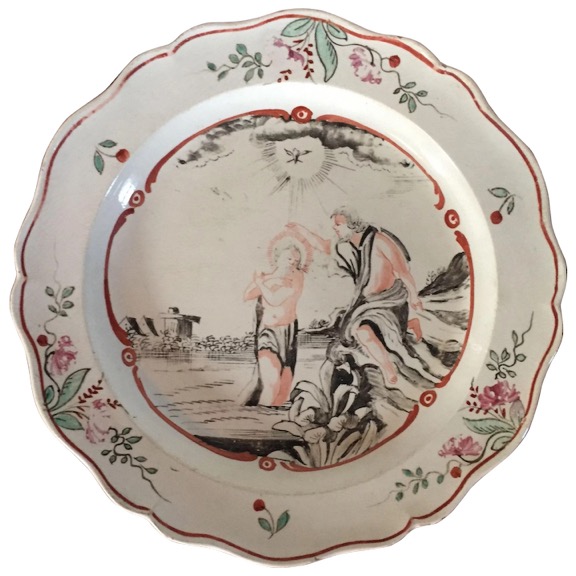
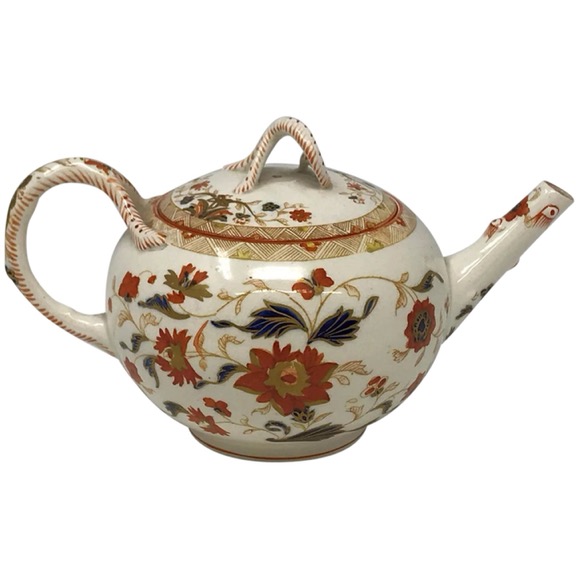
On the left we have an English Staffordshire Creamware hand-painted pottery plate depicting the Baptism of Christ, dated 1780 - 1790 (retail ca. €3,000). On the right we have a late 18th century Wedgwood Pearlware Teapot which sold for ca. €350.
Mochaware was a kind of dripped ware (slip-decorated, lathe-turned, utilitarian earthenware) from England in the late 18th century. It was the cheapest decorated domestic pottery available. Dripped ware was a term used in England in the late 18th century and 19th century for any type of utilitarian earthenware vessels turned on a horizontal lathe and decorated with coloured slip. Mochaware, once cheap and made for the workers, is now a collectable.
Below we can see some of the dominant decorative designs, e.g. the undulating "squiggle", the coiled cable or earthworm pattern, and the "dendritic" or seaweed decoration was made from combinations of tobacco juice, manganese and iron oxides, stale urine, and other recipe ingredients to create mocha "tea".

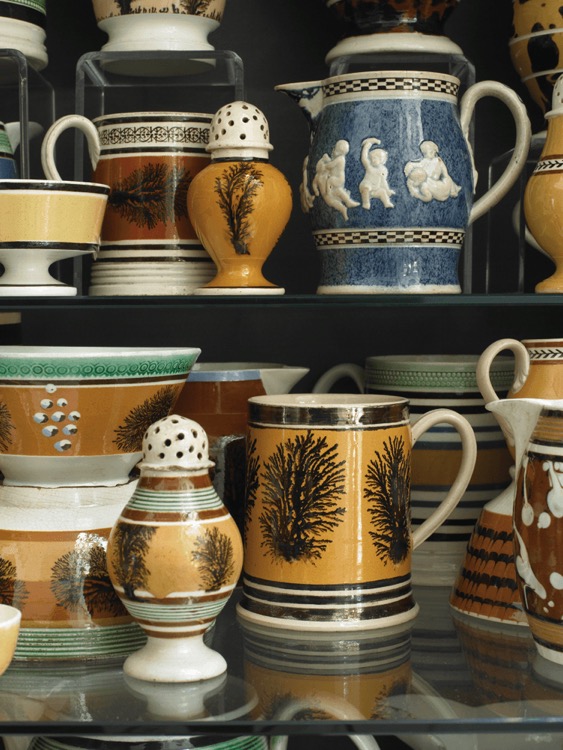
In the photograph on the left, the very early piece, circa 1770–1775, in the second row, far right, exhibits slip marbled and combed patterning. The "kick" at the base of the applied handle, seen on other English ceramics of the period, is extremely rare on mochaware. In the photograph on the right, the central truncated mug is quite rare in its use of copper lustre bands. The small jug with cobalt blue mottled surface adorned with putti sprigging is also quite unusual. Most pieces are very accessible, but rare items can approach the €500.
Stoneware
Rosso Antico was an unglazed red stoneware made in England in the 1760’s by Wedgwood, and inspired by early Chinese red stoneware tea services exported in the 1660’s.


One the left we have a museum quality Wedgwood teapot dated ca. 1810, and offered at ca. €3,000, whilst on the right we have a Wedgwood Potpourri Jar, sold in 2016 for ca. €600.
Caneware was an English unglazed light brown (or tan) coloured stoneware, developed ca. 1770. It was a significant advance over coarse stoneware, but was replaced by earthenware.
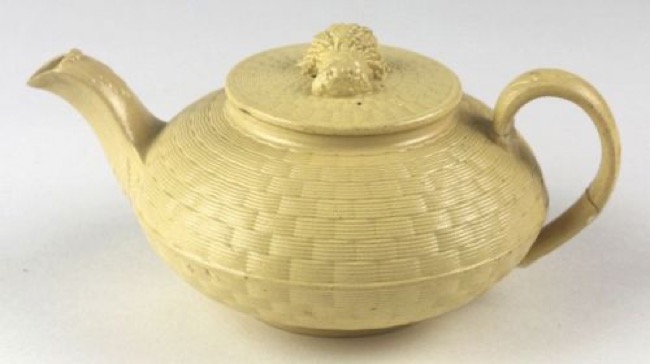
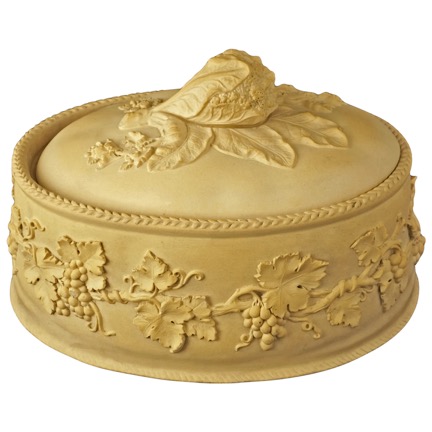
Some examples looked like a pie pastry crust, and caneware was in fact often used for cooking or serving utensils. Antique caneware can vary in price between € 20-250. On the left we have a Wedgwood bachelor's teapot worth about €100, and on the right a rarer Wedgwood game pie dish worth about €500.
I came across a reference to Crouch ware (first made in 1690), which mentioned that it was a salt-glazed stoneware but more finely finished in part due to the use of a finer grained "pipeclay" and a turning lathe. I have not found much more about this particular ceramic, but it re-introduces the topic of salt-glazed pottery, which in itself is a vast topic. In simple terms a salt glaze produces the texture of orange peel, formed on stoneware by throwing common salt into the kiln at the peak temperature. Sodium from the salt combines with silica in the clay to form a glassy coating of sodium silicate. The glaze may be colourless or various shades of brown (from iron oxide), blue (from cobalt oxide), or purple (from manganese oxide).

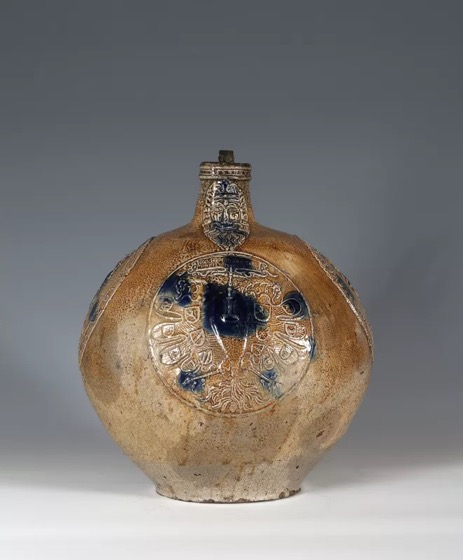
Above, on the left we have a 17th century salt-glazed storage jar, retailing for £1,950, and on the right we have a salt-glazed stoneware Bartmannskrug, from Frechen, dated 1598 (retailing at over €30,000). And below we a unique piece by Gail Nichols.
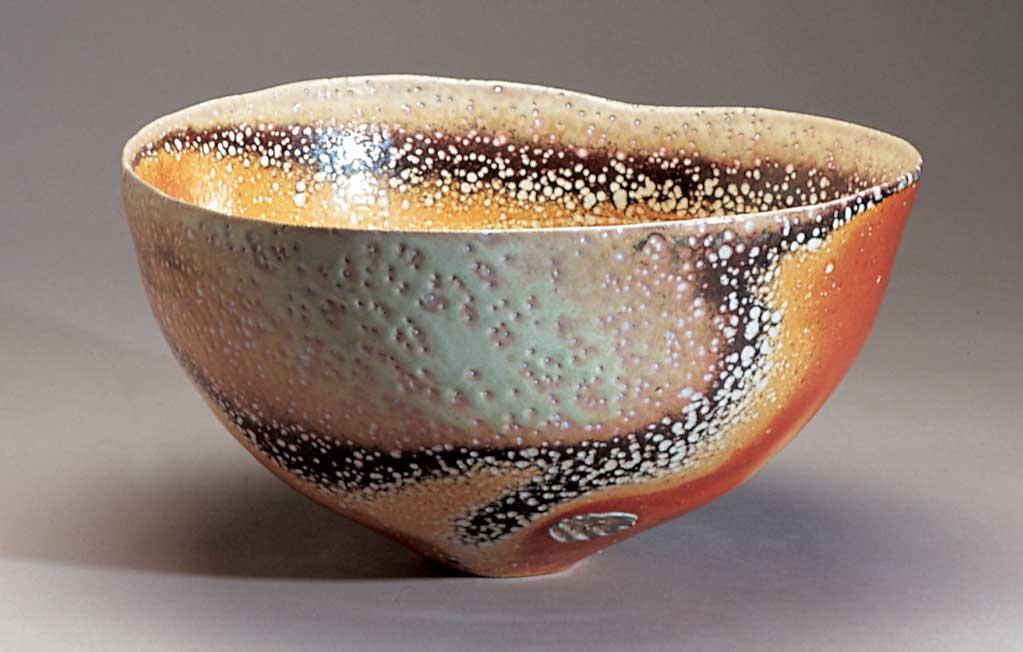
Jasperware is a type of stoneware first developed by Wedgwood. It has a matte finish and is best known with a pale blue colour. Jasper is the mineral giving this colour, and is usually red, yellow, brown or green, rarely blue (the Wedgwood blue is from a barium sulphate impurity). Black, red, green, and white jasper varieties also exist.
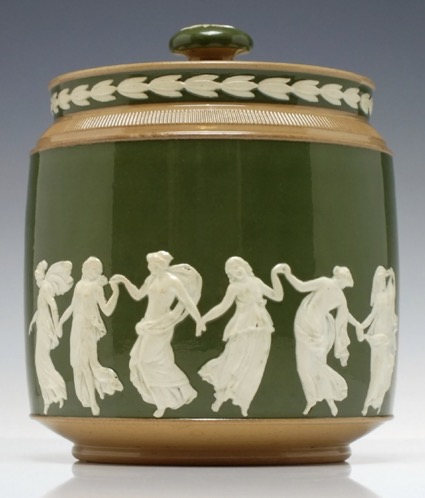

Above on the left we have a Copeland Spode Green Jasperware Biscuit Barrel, ca. 1895, selling for €220, and on the right we have a lidded Jasperware water jug, dated 1870, and selling for €130. Below we have on the left a late 19th century black Jasperware jug, selling for €150, and on the right a terracotta red Jasperware pitcher, dated 1959, and selling for €600.

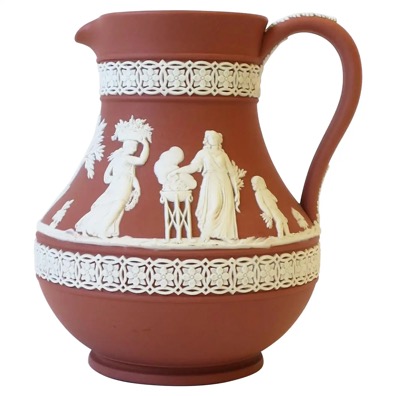
Puzzle Jugs
Before we delve into the complexities of porcelain, let us for a moment look at a light-hearted type of pottery, namely the puzzle jug. The jug is a kind of practical joke and/or conundrum, and was a tavern game or a conversation piece during a dinner party. An elaborate combination of cut-outs in the body and hollow handles and tubes render conventional use impossible (unless you want to get wet). The puzzle is to work out how to empty the jug without spilling the liquid it contains. The most common medieval types had hollow handles leading a lower compartment, for which liquid may be poured via the spout. Later types had a single internal compartment from which liquid must be sucked via a hollow handle through holes in the hollow rim. More complex variants, and the type that really made the name 'puzzle', also required outlet holes to be blocked with the fingers while sucking.

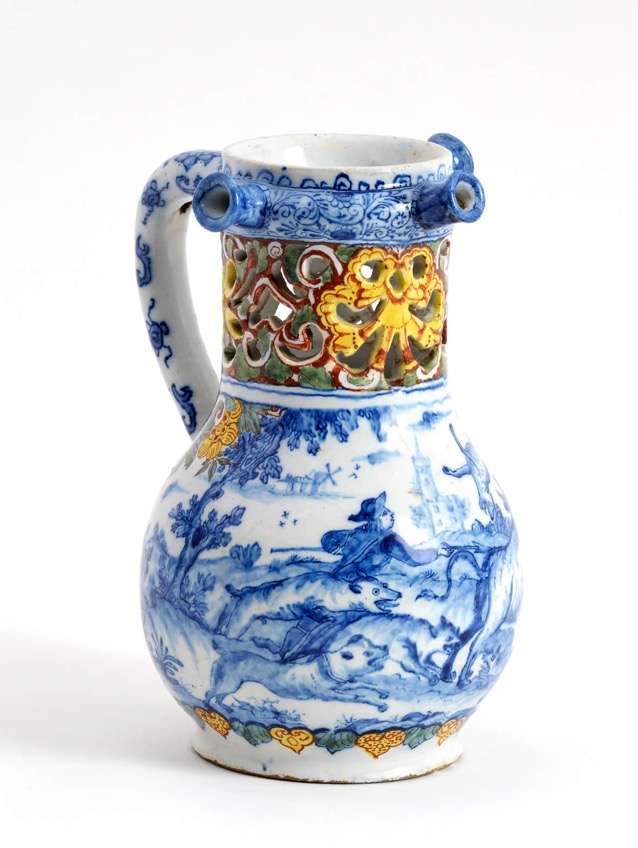
On the left we have an unusual blue and white ring-form puzzle jug, dated to the early-18th century (sold in 2018 for €14,600), and on the right we have a Delft polychrome jug, dated to ca. 1750, and retailing at €22,500.
Puzzle jugs were most likely made on special order as they were difficult to produce and remaining examples are often dated. So what is the secret of the puzzle jug. It lies in the construction of the vessel. Generally, the hollow tubular rim has one functioning nozzle, and two or more "dummy" nozzles. These false spouts are connected to the hollow handle, which forms a siphon from the lower body. The suction, however, is broken by a small hole beneath the top of the handle. To successfully drink without spilling, the drinker must place his thumb over the hole in order to create a vacuum that allows him to suck the liquid from the jug up through the handle, around the rim and out through the one functioning nozzle. The unwitting guest who attempted to drink from it without covering the holes would find himself drenched.
Porcelain
Porcelain is a ceramic made by heating a mixture of clay and kaolin in a kiln. In some countries it is referred to as "china" or "fine china" given that China was the birthplace of porcelain. We will follow the main Wikipedia article and mention here Chinese porcelain (and pottery), Meissen, soft-paste porcelain, hard-paste porcelain, and bone china.

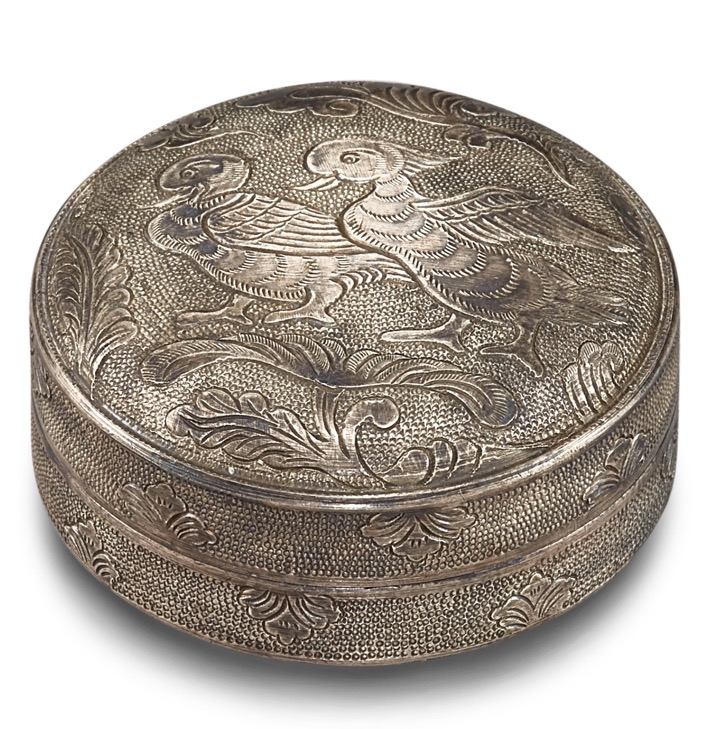
Just for comparison purposes, above we have a five-colour overlay glass 'nine dragons' snuff bottle, from the Qing dynasty (late 18th century). This snuff bottle sold for €36,700 in 2021. Next to it we have a silver 'flower and bird' box and cover from the Tang Dynasty (sold for €5,600).
Chinese ceramics can be defined by the period it was made in, by the type or use, and by the colour. They are also masters of reproductions and fakes. The best starting point is the period, i.e. Han Dynasty (206 BC-220 AD), Sui (581-618) and Tang (618-690, 705-907), Liao (916-1125), Song (960-1279), Western Xia (1038-1227), Jin (1115-1234), Yuan (1271-1368), Ming (1368-1644), Qing (1636-1912), and Republican Period (1912-1949).
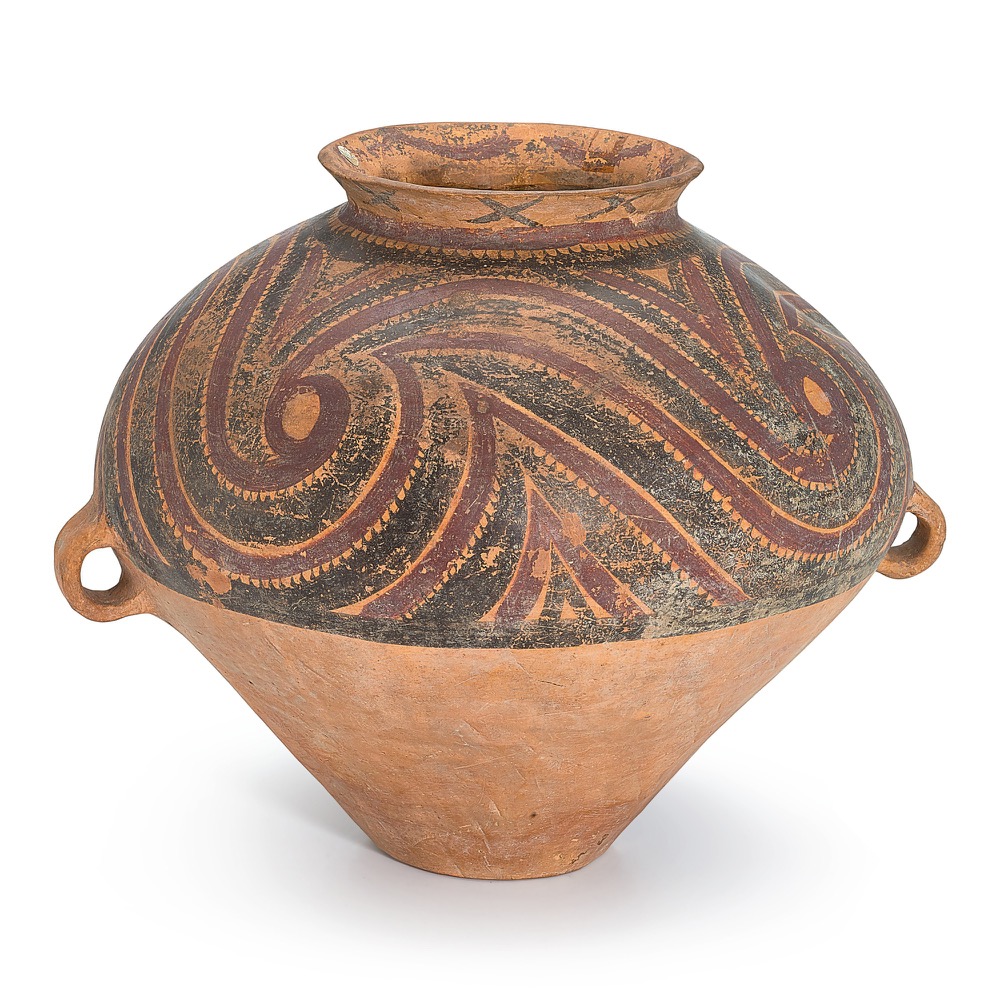
We start with a large Yangshao painted pottery jar from the Chinese Neolithic period, sold for €4,240. The Yangshao culture existed along the Yellow River during the period 5000 BC to 3000 BC. They were renowned for a fine white, red, and black painted pottery with human facial, animal, and geometric designs.
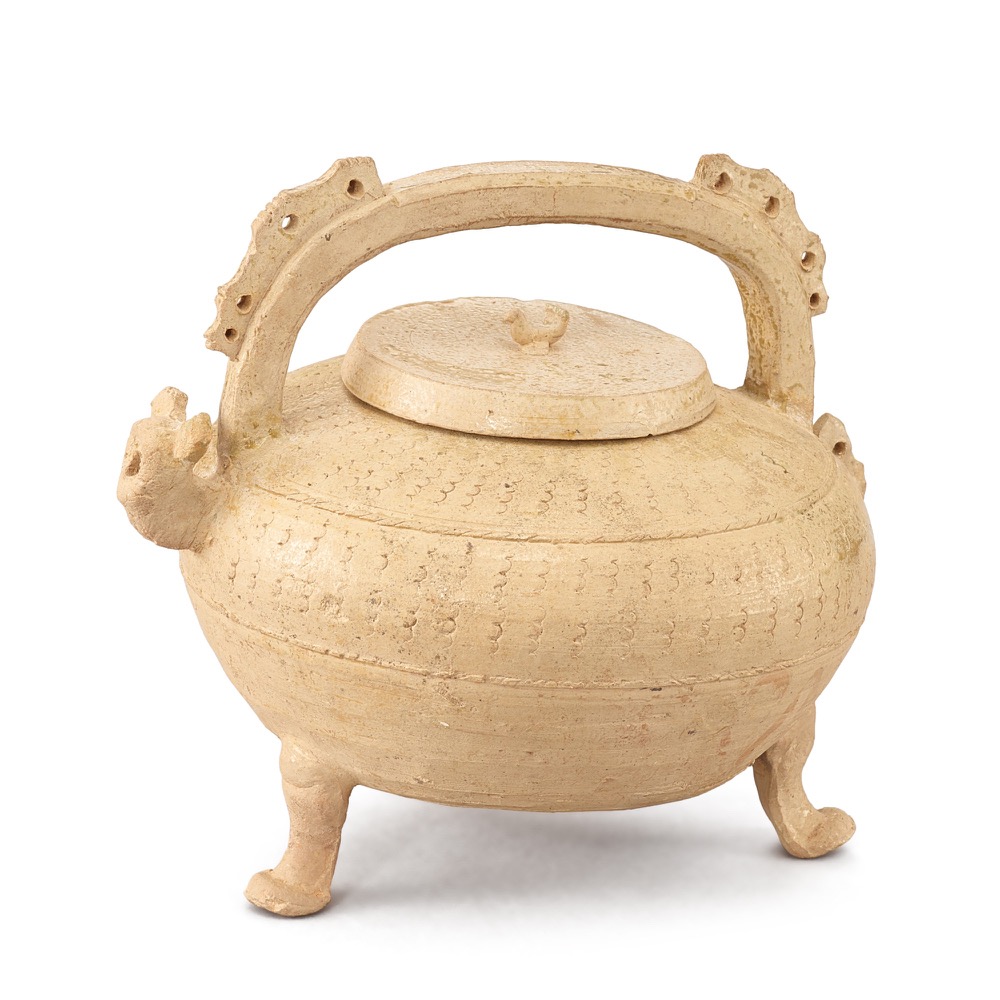
Above on the left we have a celadon-glazed handled tripod jar and cover, Han Dynasty (206 BC-220 AD), sold for €2,260. Celadon is a term for pottery denoting both wares glazed in the jade green celadon colour, and a type of transparent glaze, often with small cracks, that was first used on greenware, but later used on other porcelains. Because the green colour was similar to jade, celadon wares were highly regarded by the Chinese Imperial court, before being replaced in fashion by painted wares, especially the new blue and white porcelain under the Yuan dynasty.

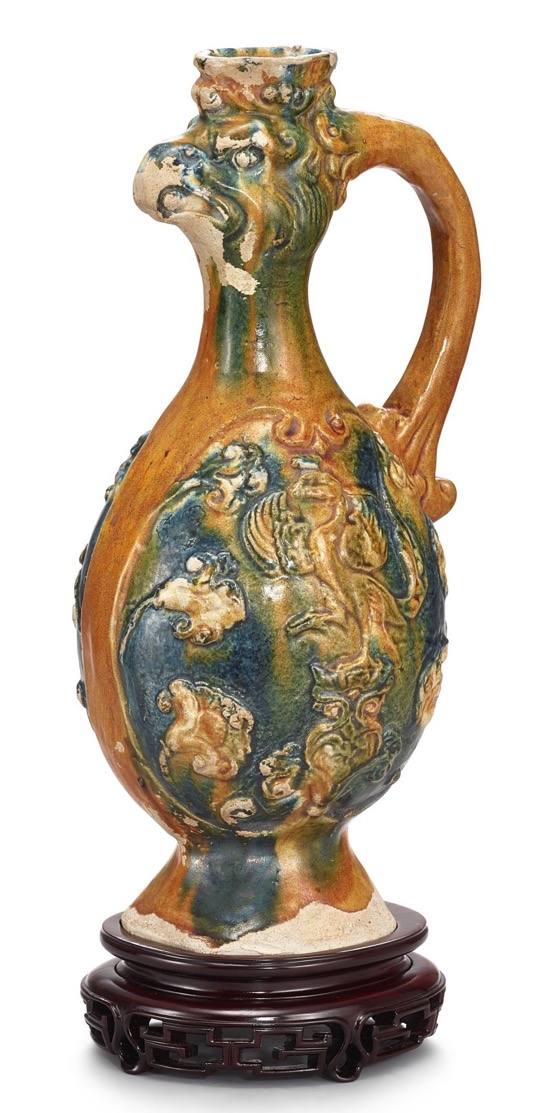
Above, from the Tang Dynasty (618-690, 705-907), we have on the left a standing figure of a warrior (sold for €2,400), and on the right a Sancai 'phoenix' ewer (sold for €53,700). A Sancai was a versatile type of decoration on Chinese pottery using glazes or slip, predominantly in the three colours of brown (or amber), green, and a creamy off-white. It is particularly associated with the Tang Dynasty (618–907) and its tomb figures, appearing around 700.
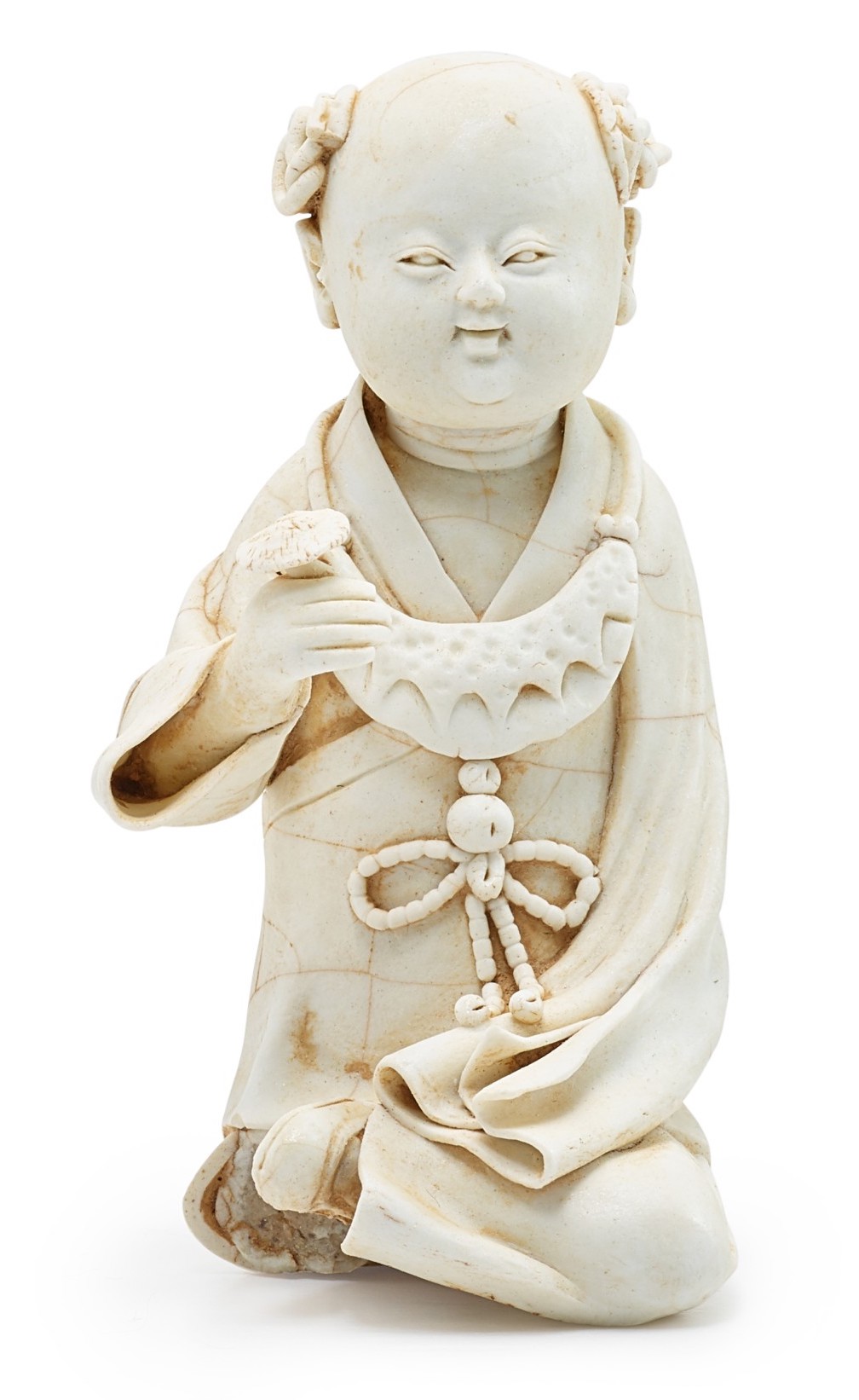
Above we have a Qingbai figure of a boy, Song Dynasty (960-1279), sold for €12,700. Qingbai ware was a type of porcelain defined by a white ceramic glaze with a slight blue-greenish tint. It is said to have been the first type of porcelain produced on a very large scale.
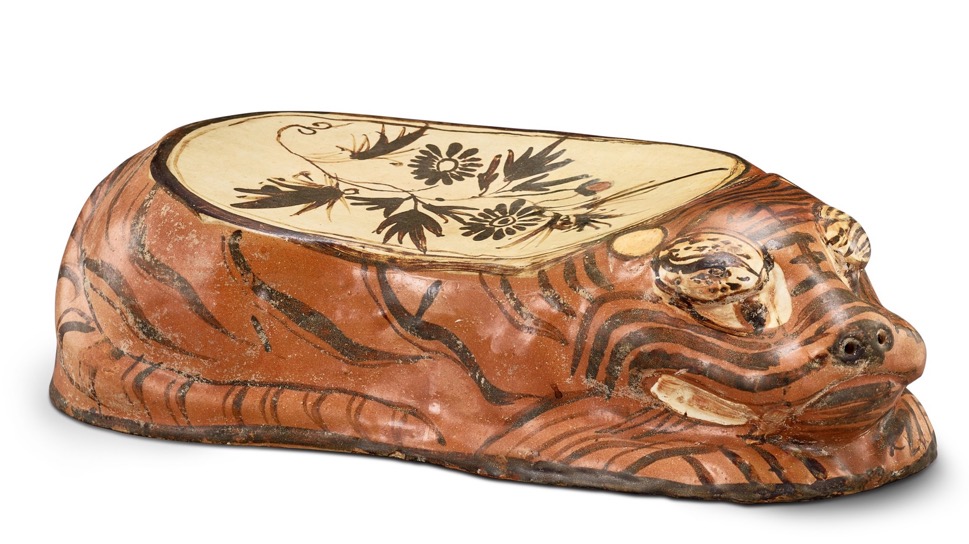
Above we have a rare Shanxi 'tiger' pillow, from the Jin Dynasty (1115-1234), sold for €5,370. Ceramic pillows began to appear in China in the Tang dynasty (618-906), and lots of them were produced in the Song dynasty (960-1279). Because they are so durable, they have lasted longer than other types of pillows made in those times. Modern scholars once believed that ceramic pillows were made only for use in tombs. The Chinese had a tradition of placing ceramic models of household objects in tombs, for use in the afterlife. But from written records and other evidence we now know that ceramic pillows had a practical purpose, too. However, it’s hard to tell which pillows were for everyday use and which were for tombs. Although some preferred a soft pillow for a good sleep, people often slept on hard pillows made from materials such as bronze, earthenware and wood. In the heat of summer, bamboo pillows and ceramic pillows could cool down the head. A ceramic pillow in the shape of a girl was thought to help a sleeper find love in their dreams. While ceramic pillows were widely used in the Song Dynasty, from the Qing Dynasty they were less popular.
The tiger in Chinese culture has a clear history of symbolism. The tiger was an important symbol in the ancient Chinese philosophy of Taoism. Taoism explains the world in terms of two opposite forces, the yin and yang (respectively shady and bright). Yin includes darkness, water, wind, and the earth. Yang includes light, fire, rain, and the heavens. Yin is passive, while yang is active. According to this philosophy, everything in the universe results from the interaction of yin and yang. The dragon, a mythical animal thought to rule the heavens, stands for yang. The tiger, considered the mightiest animal on earth, stands for yin. As a symbol for yin (darkness and inactivity and the west, where the sun sets), the tiger may have seemed an especially good form for a pillow. A tiger pillow scared away evil influences as a person slept. Children’s pillows, often not ceramic but made of cotton or silk stuffed with grain husks, frequently took the form of a tiger, to protect the child from demons that cause nightmares.

Above we have a Qingbai figure of a mythical beast from the Yuan Dynasty (1271-1368), sold for €28,300. Wikipedia provides a long list of Chinese legendary creatures, but it's not that clear what we have here, maybe a Xiezhi (symbolising justice) or a Fuzanglong since it appears to be protecting something.

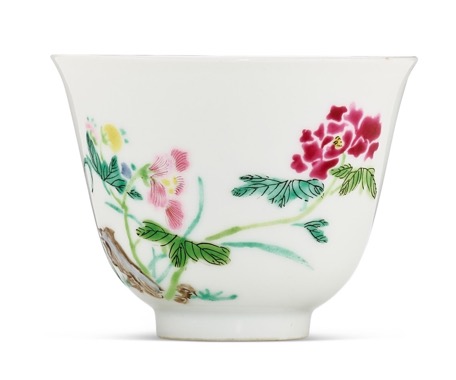
Above on the left we have a wucai 'dragon and phoenix' bowl, with a seal mark for the period of Qianlong (1735-1796) in the Qing Dynasty (1636-1912), sold for €56,500. And on the right a 5 cm high 'boneless' famille-rose cup, marked for the period Yongzheng (1722-1735), also of the Qing Dynasty, sold for €59,300.
Wucai, or "five colours", is a style of decorating white Chinese porcelain in a limited range of colours. It normally uses underglaze cobalt blue for the design outline and some parts of the images, and overglaze enamels in red, green, and yellow for the rest of the designs. Parts of the design, and some outlines of the rest, are painted in underglaze blue, and the item is then glazed and fired. The rest of the design is then added in the overglaze enamels of different colours and the piece fired again at a lower temperature of about 850°C to 900°C.
Texts vary concerning the Four Symbols or Chinese mythological creatures that are guardians of the four cardinal directions, i.e. the Azure Dragon of the East, the Vermilion Bird of the South, the White Tiger of the West, and the Black Tortoise (also called "Black Warrior") of the North. According to ancient records, the dragon appeared as a composite of many animals, such as the snake, alligator and lizard. It could also inhabit any place, and travel between the skies and the earth. Dragons were considered the heads of heavenly deities and governors of rainfall in Chinese culture. During times of drought, dragons could create precious water and in times of flood they stopped the rain and cleared the skies. As kings of the waters, dragons lived in dragon palaces under the ocean. Dragons, which were symbols of imperial power, can be spotted on many buildings in the imperial palace. As far as I can see the Vermilion Bird was a phoenix, and was commonly referred to as the "King of Birds". As sovereign of all birds, it has the head of a golden pheasant, a parrot's beak, the body of a mandarin duck, the wings of a roc, peacock feathers and the legs of the crane. As a supernatural bird, the phoenix embodied the five virtues of benevolence, righteousness, propriety, wisdom and sincerity. As such, it could not harm either a single insect or blade of grass. It perches itself only on the finest trees, eating and drinking nothing but bamboo seeds and sweet spring water.
Highly revered and greatly appreciated, images of the dragon and phoenix appeared on ceremonial ornaments and were carved, painted, or sewn onto objects of everyday use to represent reverence for the spirits and fortune.
Famille rose or "pink family" is a type of Chinese porcelain introduced in the 18th century and defined by the presence of pink colour overglaze enamel. It is a Western classification for Qing dynasty porcelain known in Chinese by various terms: 'fencai', 'ruancai', 'yangcai', and 'falangcai'. The colour palette was introduced in China during the reign of Kangxi (1654–1722) by Western Jesuits who worked at the palace, but perfected only in the Yongzheng era (1772-1735) when the finest pieces were made. Although famille rose is named after its pink coloured enamel, the colour may actually range from pale pink to deep ruby. Apart from pink, a range of other soft colour palettes are also used in famille rose. The gradation of colours was produced by mixing coloured enamels with 'glassy white', an opaque white enamel (lead arsenate), and its range of colour was further extended by mixing different colours. Famille rose was popular in the 18th and 19th century, and it continued to be made in the 20th century. Large quantity of famille rose porcelain were exported to Europe, United States and other countries, and many of these export wares were Jingdezhen porcelain decorated in Canton. Porcelains with the famile rose palette were also produced in European factories.

Above we have a yellow and green seated figure from Wenchang, early Qing Dynasty, sold for €19,800. This seated figure is typical for a Daoist deity and is an example of the Sancai, or three-colour, technique, in which a combination of three glazes of different colours, typically brown, green, and creamy white, were used by Chinese potters to decorate ceramic figures. This figure’s dignified clothing and commanding front-facing pose, indicate it is likely Tianzun, one of three supreme rulers of the Daoist pantheon. The figure was intended to inspire devotion and obedience when viewed in a temple or shrine. Here our figure sits with his hands folded in meditation.
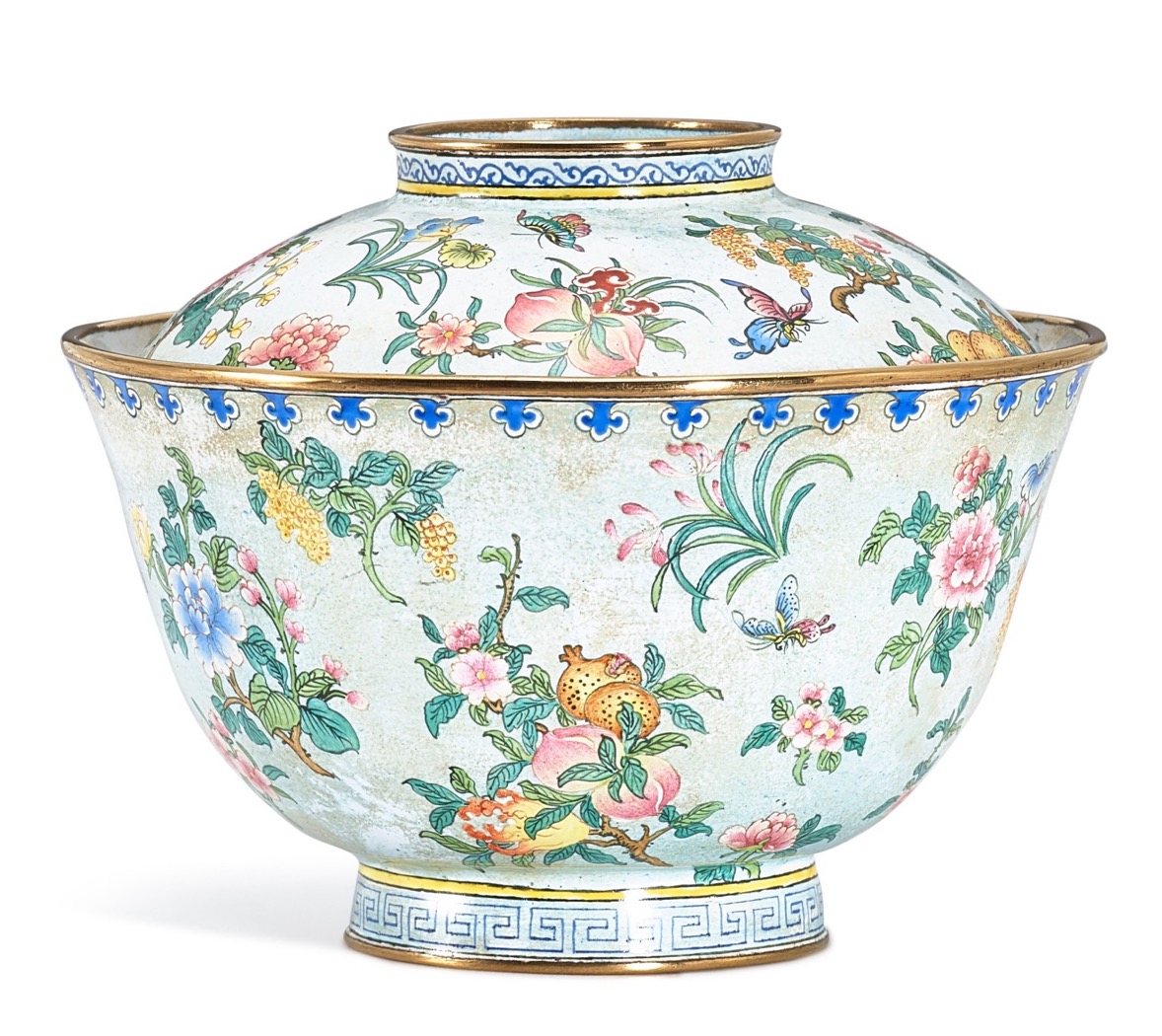
Above we have another outstanding piece from the Qianlong period (1735-1796), a painted-enamel 'sanduo' bowl and cover that sold for €127,200. The Three Abundances also known as the Three Plenty's or Three Lucky Fruits are known in Chinese as 'san duo'. It is one of the most famous groupings in Chinese art, a citron, a peach and a pomegranate. When these three fruits are shown together they represent the rebus 'fushou sanduo' or "May you have an abundance of blessings, long life and many sons". The citron or buddha’s hand represents an abundance of blessings, 'duofu' (I think the pun is in 'fu' which means good luck). The peach symbolises abundant longevity, 'duoshou'. Finally, the pomegranate represents many sons, 'duonanzi'. This rebus originates in the Warring States Period (ca. 221 BC) text Zhuangzi which is one of the founding texts of Daoism, and were considered the ingredients of a happy life (blessing, longevity, and male offspring).
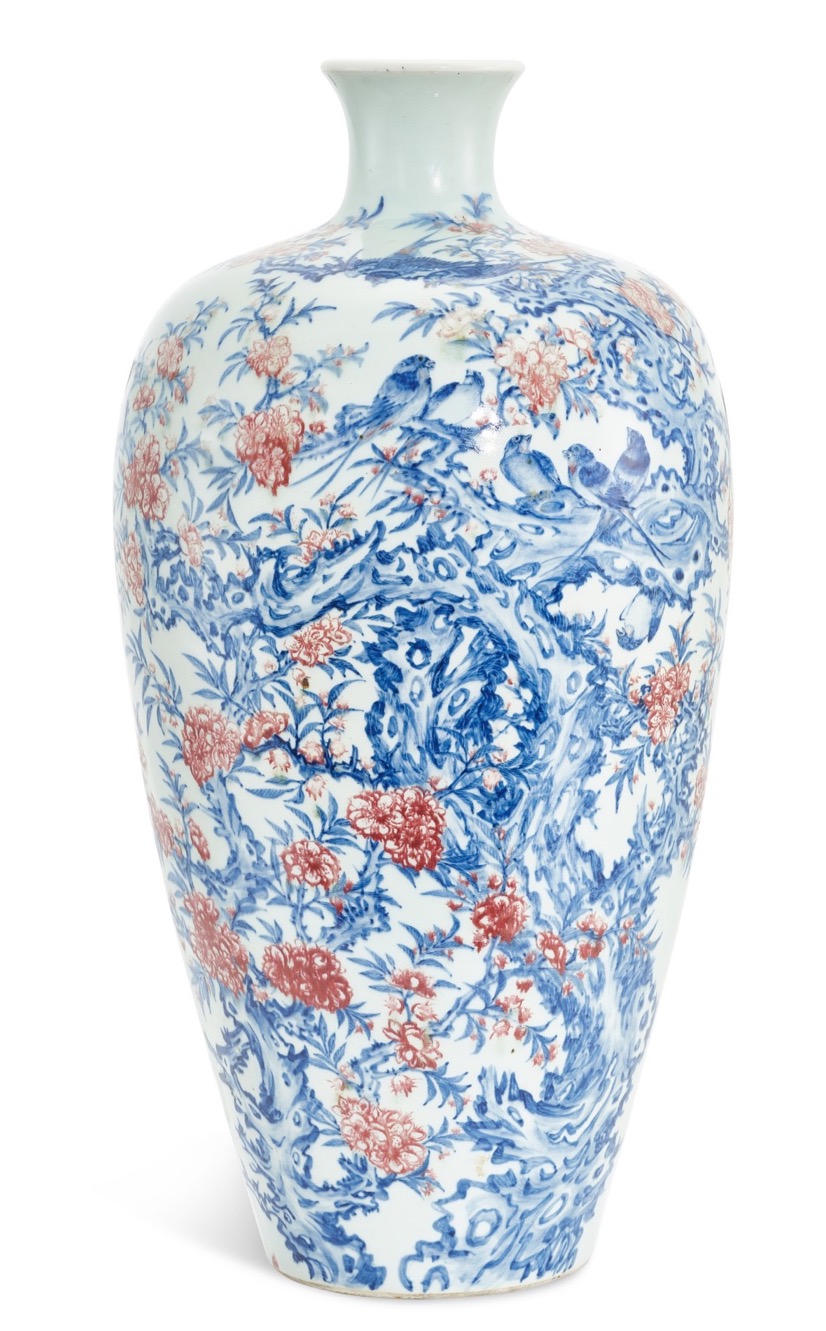
Above we have a large underglaze red and blue 'magpie and prunus' vase of the Republican Period, sold for €67,800. The 'magpie and prunus' have each their own symbolism (check out this website for the symbolism of flowers and fruit and for birds). The magpie is universally admired for its intelligence and guile but it can be a nuisance to farmers. In China it has a positive connotation, a harbinger of joy and as such a magpie is used in paintings to wish someone joy as "glad, joy and happiness". The most famous legend associated with magpies is that of Zhinü and Niulang, where on the 7th day of the 7th lunar month a bridge of magpies allows the two lovers to be briefly re-united among the stars. Another legend features a hand mirror broken in two so husband and wife could each take one part, if either party was unfaithful then the mirror turned into a magpie and flew back to the aggrieved partner. This is why magpies became a favourite decoration for the backs of mirrors. If a magpie is heard while ruminating on an action it is considered a sign that the plan is the right one. A group of magpies symbolises many good wishes, and pictures with magpies, bamboos and plums signify a wish for marital joy. With plums the message is "may happiness fill you up to the top of your eyebrows". A pair of magpies symbolise marital bliss (double happiness). Prunus is a genus covering a variety of fruit, but the plum is one of the three friends of winter with the bamboo and the pine tree. The Chinese symbol for plum is made up of two elements 'wood' and 'child', suggesting the prolific fruits produced by the tree, and 'peaches and plums' is a phrase to refer to school children. Because the flowers emerge before the leaves and it takes a long time to come into flower it is associated with longevity.
The Chinese started to produce "export-ware" exclusively for the European market in the 16th C. This included Kraak porcelain, Yixing stoneware, Blanc-de-Chine, blue and white porcelain, Famille verte, noire, jaune and rose, Chinese Imari, Armorial wares and Canton porcelain. In the 18th C exports increased and included tea-wares and dinner services decorated with flowers, bamboo or a pagoda, e.g. Willow Pattern.
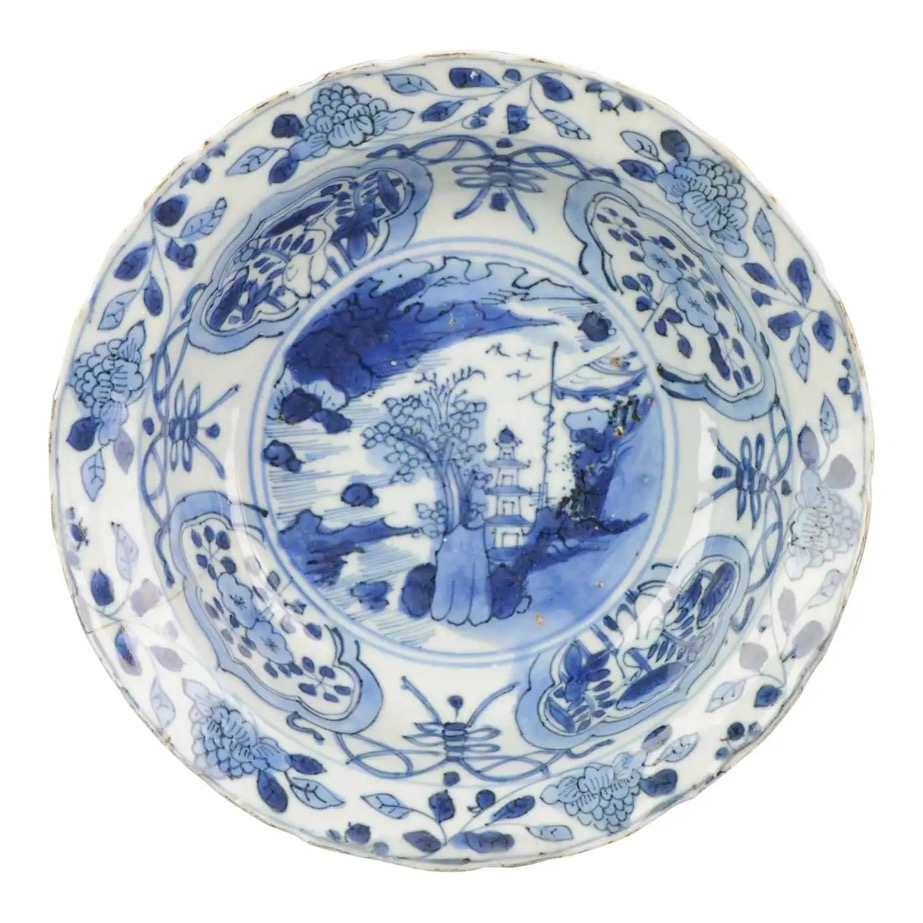
Above we have a rare and nicely decorated Kraak Klapmuts, circa 1600-1630 (the Ming Transitional period from 1620 to 1661), valued at €2,230. "Klapmuts" is Dutch and basically means a cap or a hat of a particular shape, and in particular the standard 17th century headgear of the Dutch poor. The less expensive was made out of wool while the more expensive was fashioned of beaver felt. The shape of this hat is the source of the name for the typical Dutch market soup bowl of the late Ming dynasty, typically in Kraak decoration.
The idea is that while Chinese food bowls were typically held in one hand while eating the prepared and cutup food with chopsticks, European etiquette prescribed the use of knife for cutting up the food yourself and a large spoon, for soups. For this reason a new bowl shape with a rim for resting the spoon was needed. This shape was eventually developed into what we know as a deep plate. The introduction of rims are also explained as being for condiments such as mustard, while others mention them for collecting bones and similar debris.
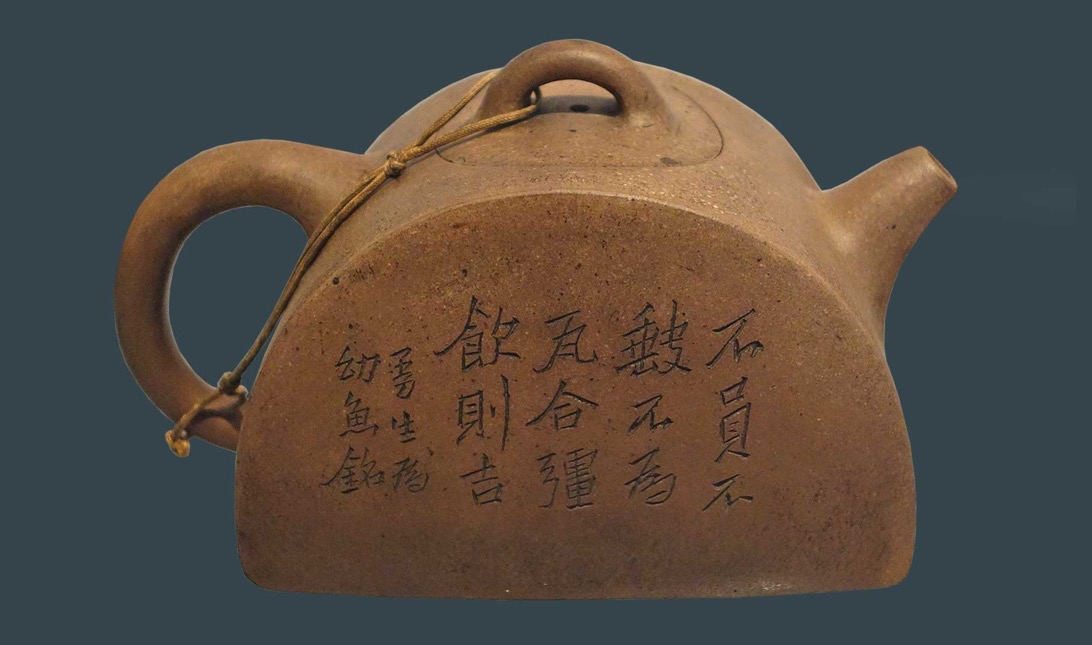
Above we have a small Yixing stoneware teapot from the Qianlong period. In 2011 a pair of these melon-shaped teapots from this period sold for a record-breaking $2.18 million. And in 2019 a rare pear-shaped Qianlong teapot, which was just 13 cm tall and had a cracked lid, sold for £1,040,000. From the 17th century on, Yixing wares were commonly exported to Europe. The finished stoneware, which was typically left unglazed, was used for teaware and other small items, and was usually red or brown in colour.


Above on the left we have a Blanc de Chine family grouping, with an 18th century He Chaochun mark, and sold for $938. He Chaochun was thought to have been a relative, possibly the younger brother of He Chaozong, working about twenty years later and on a smaller scale than the celebrated late Ming dynasty Dehua potter. Other blanc de chine figures impressed with a He Chaochun mark, have been sold at Christie's New York and Christie's Paris. On the right is a signed Chinese Dehua Blanc de Chine Guanyin statue dating from the 1960's or 70's, valued at about $500. Guanyin is the Buddhist bodhisattva associated with compassion.
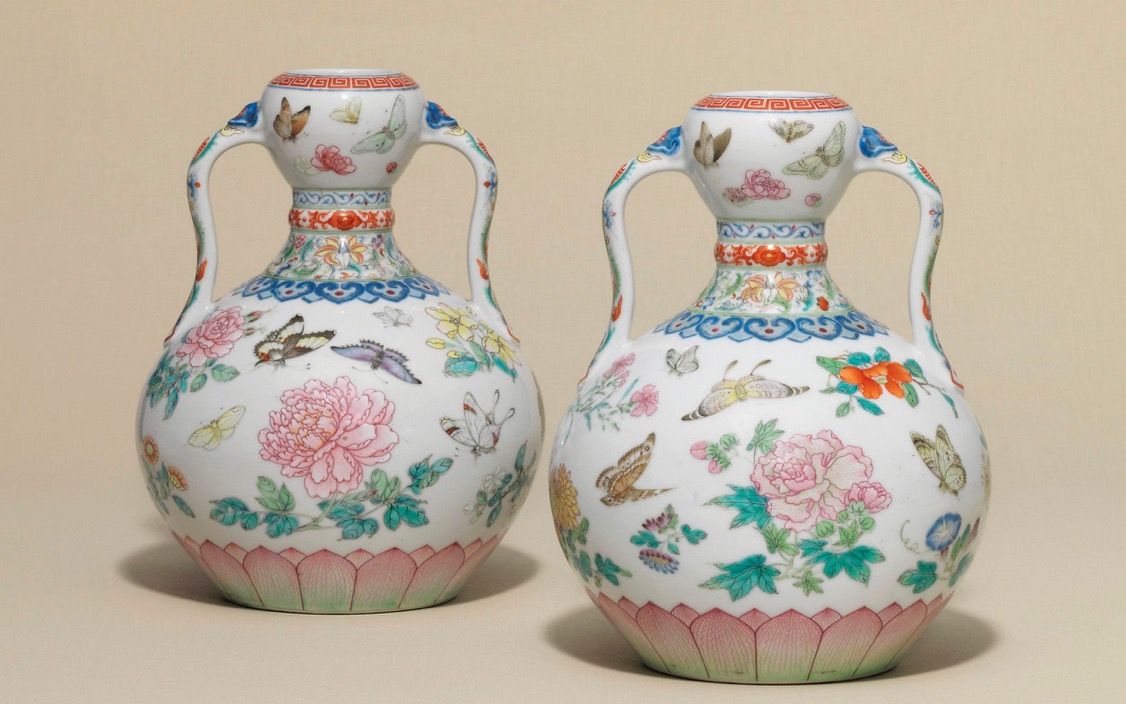
Above we have a pair of Famille Rose 'Butterfly' double-gourd vases, with a Qianlong seal mark, from the period 1736-1795. The vases, made in the 18th century for the court of the Qianlong Emperor, were purchased in the early 1930's by an English buyer who passed them on to the current owner who "had no idea that she had such amazingly important pieces in her collection". It was the first time a pair of such Qianlong vases had been auctioned, only four other single vases of a similar type have been sold in the past. The vases are elaborately decorated with butterflies partially hidden and partially visible among flowers glazed with bright colours. Such intricate design, bearing royal hallmark colours such as yellow and red, imparts auspiciousness and long-lived wealth.
In 2017 they were sold for £14.73 million, including buyers premium (the purchaser was a Chinese male). Also in 2017 a Ming Dynasty (1368-1644) blue and white lobed "Fish Pond" bowl sold for $29.5 million, also to an Asian private collector. In 2010, a Chinese vase discovered during a routine house clearance in a London suburb went under the hammer for £43 million, 40 times its estimated price. But the intended purchaser is understood to have backed out of the deal in a dispute over the £8 million auction fees (finally it was sold for £20 million).
Chinese Imari is a decoration style with predominantly a dry iron red enamel highlighted with gilt applied on underglaze blue and white porcelain. Its immediate source of inspiration was the Japanese aka-e (red painting), but it could be traced back to the Chinese "Wanli Wucai" immediately before that. When during the 2nd half of the 17th century due to the downfall of the Ming dynasty the Dutch East India Company could no longer export much porcelain from China, they turned to Japan as an alternative porcelain manufacturer. Of the shipments of Japanese porcelain which were made to the Netherlands some were aka-e or "red painted" and carried the name "Imari" porcelain in part referring to any porcelain shipped out from the Imari port but mostly in the minds of people referring to this red painted decoration. This "Imari" style was very successful in Europe. After the Chinese porcelain trade reopened for large-scale export, they copied the Japanese 'red' design to become one distinct export family of itself. This first Chinese Imari was produced at the end of the reign of the Chinese emperor Kangxi (1662-1722) and it remained popular up until the mid-18th century. As a general rule the Chinese Imari pieces are more finely potted, have a thinner and more even glaze than the Japanese. The red enamels are as a general rule thinner and more translucent than the Japanese who tends to be of a fuller more dark red. The underglaze blue is generally more bright and clear than the Japanese.
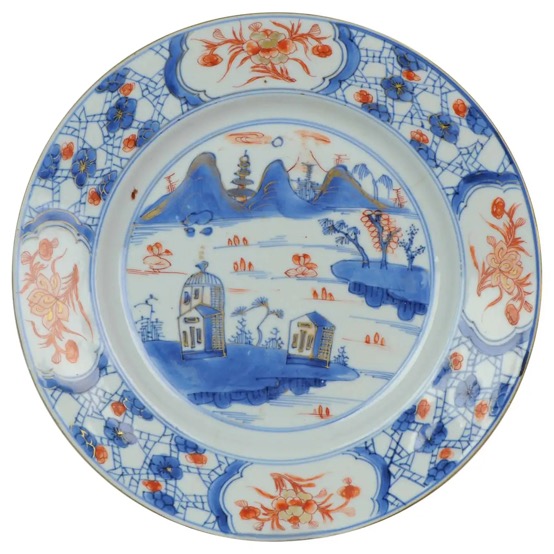

Above on the left we have a 18th century Chinese Kangxi Imari plate with a European landscape, priced at €300. Next to we have a very typical 19th century Chinese Imari plate, valued at about €260.
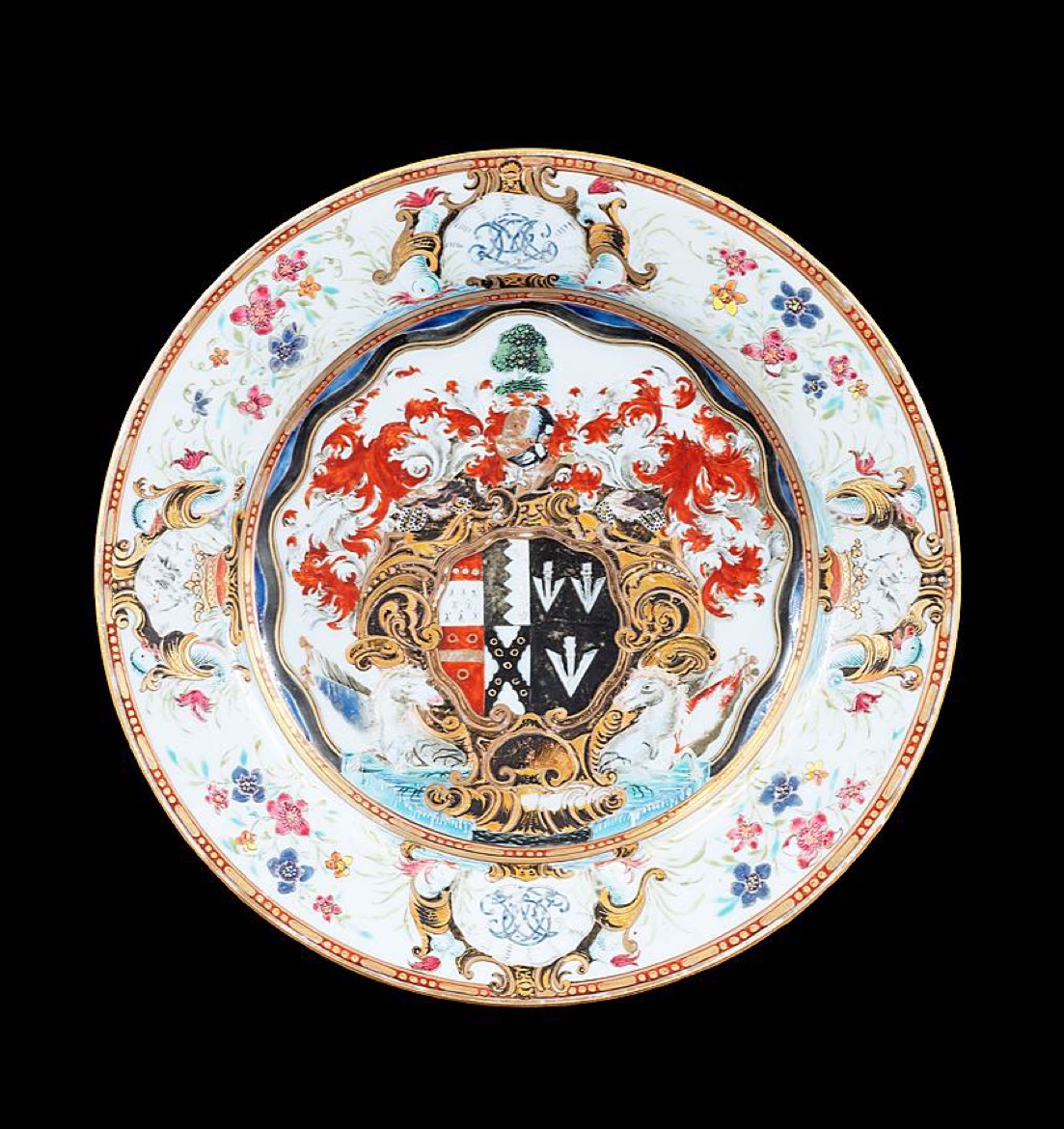
Above we have a Chinese export Armorial porcelain dinner plate, with the arms of Okeover. The plate has been dated to the Qianlong period, circa 1743, and was offered for £22,800. What we see is a very ornately decorated plate in famille rose enamels in Rococo style, the central coat of arms surrounded by elaborate gilt scroll and shell framing and rouge de fer and white mantling, with two horses above a waterfall, all within a scalloped frame, the rim border having sprays of European flowers and four panels with monograms and crests. This is the most famous of all the Chinese Export Armorial services. The auctioneer claimed that the whole design was "almost overpowering and has not a trace of Chinese influence". The original artwork (which still survives) was believed to have been painted by Arthur Devis Sr. (1712-1787). The arms are for Leake Okeover Esq of Okeover near Ashbourn, Derbyshire. Properly they are, on the dexter half, clockwise from top left - Okeover quartering Byrmingham, Pettus, and Leake impaling, on the sinister half, Nichol. The crest above the arms is an oak tree on a green mound and the rim crest is a dragon on a ducal coronet, while the monogram is LMO. The service was ordered by Leake Okeover in about 1738 and two deliveries were made. The first in 1740 was for 70 plates and 30 dishes by Ralph Congreve, costing £99 11s 10d. The second was in 1743 from Joseph Congreve, commander of the ship Prislowe, and was for a further 50 plates and four large dishes. The cost of roughly £1 per piece was very high and much more than usual for armorial services, reflecting the high detail and craftsmanship. In armorial porcelain this service has never been equalled for quality. Only plates and large dishes are known.
Leake Okeover was the son of Thomas Okeover and Catherine Leake and was born in 1702. He married in 1730 Mary, daughter of John Nichol but died without heir in 1765, a year after his wife. He moved to the Tudor House at Okeover after his marriage and in 1747 built an extensive new house there. His ancestral estates at Okeover, first recorded in the possession of Ormas Acover in 1100, are still in the family having passed through cousins. Much of this service was sold in 1975 by Sir Ian Walker-Okeover (a history of the family estates can be found here).
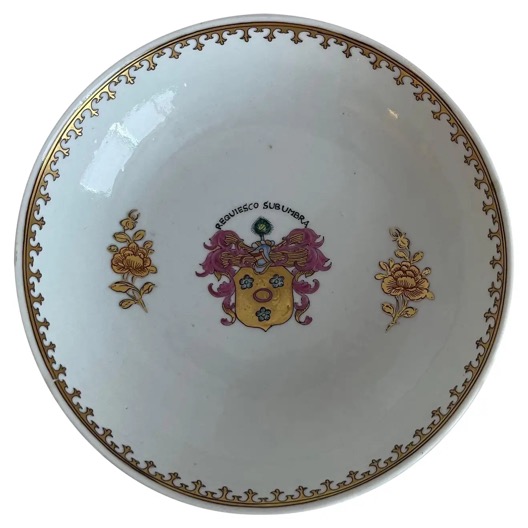
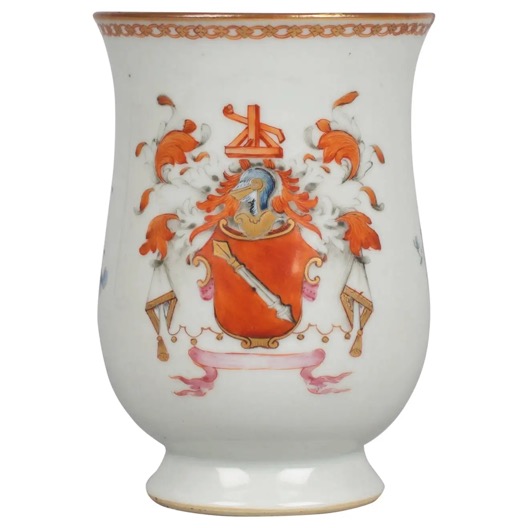
Above on the left we have a Chinese export armorial saucer with the Hamilton coat of arms, dated 1795, and priced at €300. On the right we have a famille rose armorial tankard with the Armstrong coat of arms, dated to ca. 1750, and sold for €3,400.
Canton porcelain had highly recognisable motifs of tranquil landscapes and scenes with tea houses, village scenes, bridges, streams, trees, mountains, and very few figures featured on the centre of each blue/white porcelain piece. The more skilfully the motif is painted by the artist, the more interesting and valuable the piece is to collectors. Another thing to note is that the original Canton ware designs were painted on and not applied using the transfer process. No porcelain was ever fired in Canton however enamelling studios in and near Canton (Guangzhou) became very common during the first decades of the 18th century, and became the predominant supplier of enamel decorations around the end of the 1730's, due to the demand of the western buyers. Guangzhou was the only Chinese port open to foreign trade during the period, and the various East India Companies ideally wanted their porcelain orders to be filled before their ships would begin to load the tea and silks, that was the main cargoes (i.e. the porcelain served as ballast). In 1810 a ships contents were auctioned, the porcelain only made up 2.4% of the value of the cargo, although it is said that up ⅓ of the illicit cargo was "chinaware" for the crew. To this end any porcelain that was available off the shelves or could be decorated to order fast enough, would go in first. In the enamelling studios the dishes were decorated on an "assembly line", with artists painting an individual element on the dish before passing it to the next artist. Any porcelain of special shape and special underglaze blue and white decorations, still needed to be ordered to be made at the kilns in Jingdezhen and would be delivered not earlier than the next season. In the late 18th and early 19th century Chinese porcelain was an extremely popular import. "Canton ware" were seen as minor status symbols and could be found in upper and middle class households.
There are equally stories of ship being sent only for porcelain, in 1717 two ships were commissioned to spend £44,000 on porcelain (610,000 pieces), apparently for shipping and government officials. From 1720 and for over 50 years it has be estimated that that England imported 25 to 30 million porcelain items, the French imported 3 million items between 1722 and 1747 and between 1761 and 1775 another 2 million items. Denmark imported 10 million items, and Sweden 11 million items. There is also ample evidence concerning Europeans providing the designs for the plates, etc. with precise instructions concerning the colours, etc., and this was equally true for ivory, carpets, enamels, etc., and pictures of Europe were constantly being asked for, in part for admiration and in part for imitation.
Pieces made before 1891, were largely unmarked, it normally arrived with paper labels only. In the US after 1891, pieces were marked in compliance with the McKinley Tariff Act of 1891, which required that imported items be marked with the country of origin in English, with “China” or “Made in China” on each piece.
Original antique Canton ware should have an ashen coloured body, and ware that is bright white is probably a newer reproduction. Canton ware has asymmetrical ridges and indentations around the rim of plates and platters. Canton ware patterns have an inner border of wavy lines and outside border patterns are decorated with lattice or criss-cross. Some Canton ware has cobalt blue decoration while others have a washed out gray-blue colour. The higher the contrast and darker the blue colour, the more desirable the piece of Canton ware.

Above we have a 84-piece 19th century collection of Canton ware that sold for $5,936 in 2010, and below a 40-piece 19th century collection for sale in 2022, estimated at $300 to $500.
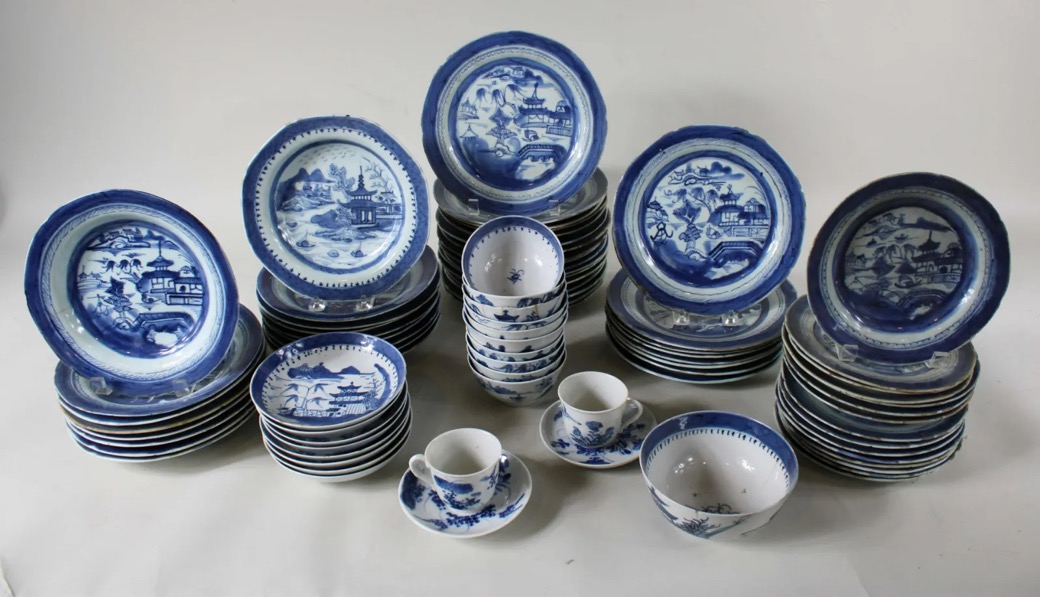
European Porcelain
Porcelain was first produced in China in the 6th century AD, and early pieces of Chinese porcelain were known to have been imported into Europe in the 14th century. Initially it was owned only by the richest and most powerful members of society, who displays it on mounts of silver and gold.
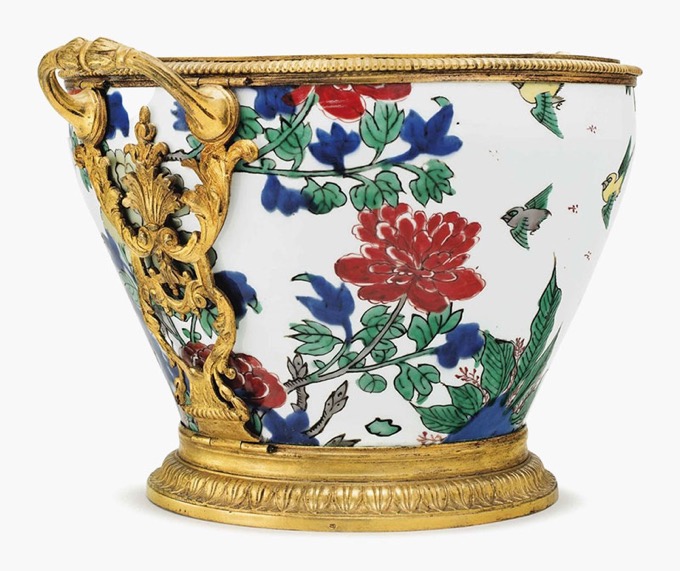
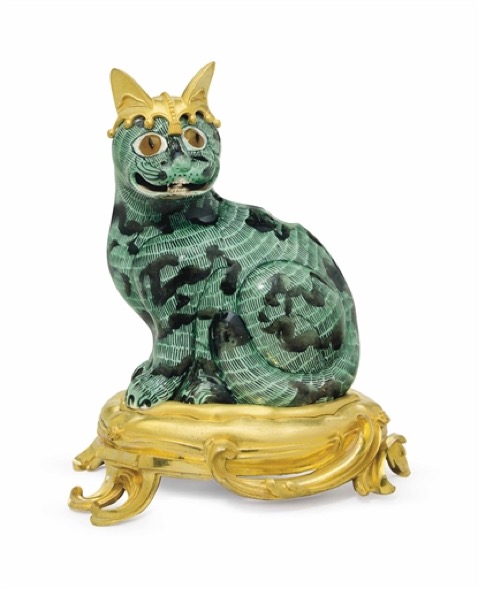
Christie's have a specific webpage dedicated to Mounted Porcelain. On the left we have a 17th century Wucai cachepot, mounted in the 18th century, and sold for $20,000 in 2016. On the right we have a helmeted cat with later glass-inset eyes, with its biscuit-glazed fur picked out in green and black. Originally a night light, probably Kangxi (1662-1722), and sold for $12,500 in 2016.


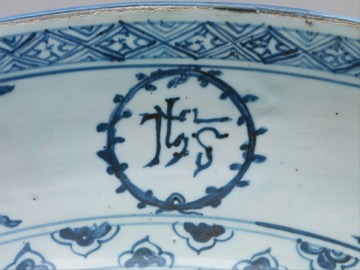
It is thought that Vasco de Gama (ca. 1460-1524) would have brought back exemplars of Chinese fine porcelain (possible in 1503). In 1507 Manuel I (1469-1521) ordered several objects. In this way, the armillary sphere, the royal arms and religious symbols like the monogram IHS (Iesus Hominum Salvator) encircled by a crown of thorns, were immortalised on the first porcelain manufactured specifically for the Portuguese market and dated about 1520. You can see the difficulties felt by Chinese craftsmen in copying European alphabetic inscriptions.
As trade with the East expanded, increasing quantities of porcelain were imported, and awareness of this desirable material spread. By the 1700's, porcelain was associated with the fashionable pastimes of drinking tea, coffee and chocolate and was in great demand by the growing middle class. Large quantities were imported from the Far East into Europe and porcelain collecting became a mania in some circles. The production of porcelain was regarded as a potential source of great wealth to whoever could master its secrets.
In response to the craze for porcelain in the early 1500's, Western merchants imported at least 70 million pieces in the 17th and 18th centuries. European princes and aristocrats succumbed to "porcelain disease" (Porzellankrankheit), a feverish desire to possess the Chinese ware, which they exhibited in a cabinet or arrayed in a Porzellanzimmer. Indeed, Europeans condemned the Chinese as "porcelain headed extortioners" because of the treasure that went to China to pay for the imports. This was a consequence of porcelain holding a unique position in trade between East and West. European merchants coveted spices, which were grown in India, Sri Lanka, and maritime Southeast Asia, and they wanted silk, which was produced in the Middle East and Central Asia as well as in China, but porcelain remained a Chinese monopoly until the early 18th century. In 1708 the researchers of Augustus II the Strong, elector of Saxony and king of Poland (1670-1733), discovered the secret of porcelain manufacture, a dream of European princes for two centuries. The porcelain manufactory of Meissen brought the West into competition with China for the first time.
Augustus II the Strong was an insatiable collector, and by 1727 he had amassed more then 24,000 pieces of Oriental porcelain to be displayed at his Japanese Palace, the world’s most spectacular "Porcelain Palace". In fact already in 1590, the Ferdinando I de’ Medici, Grand Duke Tuscany (1549-1609) gave sixteen pieces of Chinese porcelain as a gift to the Christian I Elector of Saxony (1560-1591). Eight of these pieces are still in the collection, and at least two, a phoenix-shaped wine-jug and a small crayfish-shaped vessel, are recorded in the 1579 inventory of the Medici collections. They, therefore, represent the earliest documented Ming porcelain in Europe (there are of course older pieces in European collections).
Chinese porcelain from the imperial factories of Jingdezhen was made from a mixture of two raw materials, namely kaolin, a refractory white-firing clay, and petuntse, or porcelain stone, a rock composed of mica, quartz and feldspar. The alkalis of the porcelain stone had a strong fluxing effect so that, fired at temperatures in the range 1250°C to 1300°C, the porcelain body 'matured' to a material that was largely glassy, with its strength and rigidity provided by a network of fibre-like crystals of the compound mullite.
It's difficult to explain the above process, without becoming even more technical. What is being described is the recombination of chemical compounds that were once separated by the natural weathering process of rock. Nature would have very slowly reconsolidated the clays, but potters exploit a 'short-cut' by rapidly heating the mixtures. This process 'freezes-in' the solidified rock-like ceramic appearance. The more or less high temperatures applied to clays during ceramic firing results in a distinct state of sintering (i.e. compacting) that is dependent on the firing temperature, the duration of firing, the firing atmosphere, and the composition and grain-size distribution of the clay. Owing to the variability of clay composition, the mineralogical processes during thermal transformation of clay minerals can be very complex, not least because most reactions occur far removed from thermodynamic equilibrium and hence are kinetically controlled, i.e. they are time- and temperature-dependent. During firing, the feldspar flows and dissolves many of the other particles in the clay into an increasingly viscous glassy melt that bonds the quartz particles and, if temperatures are sufficient, provides the conditions to enable the flat kaolin crystals to convert to long mullite crystals (the feldspar acts as a ceramic flux, lowering the melting point of the main glass forming constituents, usually silica and alumina). Porcelains are usually fired above 1180°C, the lower practical limit for feldspar to work as a vitreous body flux, and they contrast with refractories in that the fired matrix of the latter is just particles fused together at their points of contact (with voids between). The feldspars in porcelain form glasses that fill the voids, glue the silica or other refractory particles together and seal the matrix from the penetration of water. Porcelain clay bodies are made from fine grained materials and lack the iron impurities of stonewares, and those low in titanium, and are well vitrified, can be translucent. Porcelains normally have a smooth and pleasant surface (if fired to sufficient temperatures), but tends to warp during firing because they must be taken closer to the melting point to achieve the desired properties.
Chinese porcelain stone differs from, for example, Cornish China stone, which performs a similar role in firing, but does not have the high mica content of the Chinese material. Mica confers additional plasticity and 'green strength' to the unfired Chinese porcelain body. Chinese or hard-paste (high firing) porcelain has a relatively strong body in the unfired and fired states, and it also has a wide firing range and is relatively stable in the kiln. It is white, due to the low contents of iron and titanium oxides in the raw materials, and is translucent, due to its high glass content. These properties allowed the production of very fine white ceramics, which were ideal grounds for painted decoration.
The high prestige and considerable value attached to porcelain by Europeans meant that increasing efforts were made to produce it, and these are generally considered to have begun with Francesco I de’ Medici (1541-1587), who established a short-lived production in Florence. Medici’s difficulty, and those of many later would-be manufacturers, was the lack of a white-firing kaolin with an appropriate flux from which to make the body. He was thus obliged to make a body rich in lime and silica, minimising the content of clay with its discolouring iron and titanium oxides. Porcelains of this type, which matured to glass-calcium silicate assemblages, had low firing temperatures and narrow firing ranges, coupled with poor thermal shock resistance. Losses during firing could be prohibitive and the ceramics were also more inclined to fracture during use. The manufacture of such low firing, soft paste bodies, with relatively low clay content, was the strategy adopted in most European attempts to manufacture porcelain prior to the discovery of sources of kaolin (china clay). European kaolin was first utilised commercially in Saxony by Johann Friedrich Böttger (1682-1719) from about 1710. Suitable sources of kaolin were not exploited until the 1760's in France and Britain, however, and throughout most of the 18th century, most porcelain made in these countries was soft paste.
In France, successful soft paste porcelains were produced from the late 17th century at St Cloud, near Paris, and by 1740, factories had been established at Chantilly, Mennecy, and Vincennes. In central Europe, there was early success with kaolin-rich formulations. Böttger’s initial recipe appears to have involved the use of kaolin with a small amount of gypsum as a flux, and produced a body very rich in mullite. Later, he changed to an improved formulation using kaolin and feldspar. The technique of hard-paste porcelain of the Böttger-type spread to other centres, such as Vienna, but rather slowly, as the production methods were closely guarded and technological transfer usually depended upon luring a key worker to another location. A different approach again appears to have been adopted in Italy. Bodies examined from the manufactory at Capodimonte suggest that these were quartz-rich bodies, with low lime content.
The earliest attempts to manufacture porcelain in England that can be regarded as approaching success were by John Dwight of Fulham (d.1703), who in 1672 took out a patent for the manufacture of "transparent earthenware commonly known by the names of Porcelane or China & Persian ware". In terms of microstructure, Dwight’s whiteware bodies came close to Chinese porcelains from the classic locality of Jingdezhen. In spite of favourable comments, Dwight’s ware was not a commercial success. After Dwight, no attempts to manufacture porcelain commercially in England appear to have been made until the 1740's, but there is evidence that knowledge of his general approach, of mixing clay with a glass flux, was known beyond his immediate circle. In the following decades, the method of manufacture continued to be discussed. A Jesuit missionary, François Xavier d’Entrecolles (1664-1741), sent detailed letters from China explaining the methods of porcelain manufacture at Jingdezhen in 1712 and 1722. These were published in 1735 in Jean-Baptiste Du Halde’s Description Géographique de l’Empire de la Chine. In 1739 the French chemist, René Antoine Ferchault de Réaumur (1683-1757), wrote of his attempts to produce porcelain involving the devitrification of a glass starting material. That an understanding of the principles involved in producing a vitrified ceramic body were becoming understood is revealed in a important manuscript dated 1732 in the British Library, a deposition by two witnesses to the process adopted by a certain Richard Holt in the manufacture of "artificial stone". This was a stoneware intended to replace decorative marble in architecture, and which was a precursor of the Coade Stone which was so successful late in the century. It involved the addition of glass to clay to act as a flux. Thus, by about 1740, there existed sufficient understanding of the principles of the behaviour of ceramic bodies during firing to act as a general guide in attempts to manufacture porcelain, even if the approach taken was not as systematic as that adopted by Wedgwood a few decades later. Between 1744 and 1750, porcelain was made in at least eight factories in England, namely Bow, Chelsea, Limehouse and the 'Girl on a Swing' factory, Bristol, Derby, Longton Hall and Newcastle-under-Lyme, both in Staffordshire. In the next decade, new factories began at Vauxhall, Worcester, Lowestoft and Liverpool. Between them, these factories used at least four major soft paste porcelain body types, as well as variants upon a number of these. Notably bone ash, after the famous patent by Thomas Frye (ca. 1710-1762), a proprietor of the Bow porcelain manufactory, and dated to 1749, which is generally interpreted as proposing the addition of calcined bone ash to a porcelain body. The bone ash formulation was taken up by a number of 18th century factories, but many of these may be distinguished by minor compositional differences in the bodies.
Hard-paste porcelain is a ceramic made of a mix of feldspathic rock and kaolin fired at a high temperature. Originally from China the secret of its manufacture was discovered by Meissen, who was the first European hard-paste porcelain producer, starting in 1710.
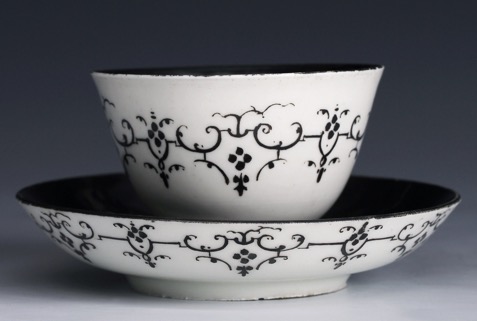
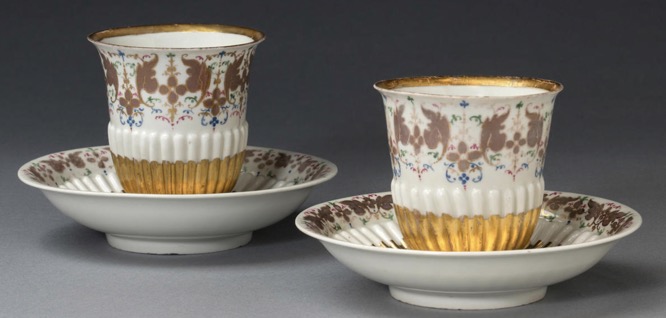
Above on the left we have an early Meissen Böttger porcelain tea bowl and saucer, dating to ca. 1716, and decorated in silver in the workshop of Georg Funke. The reverse of the saucer and exterior of the teabowl with are decorated with silver baroque scroll bands (the silver has oxidised to a deep black). It would appear that initially the Meissen factory had considerable difficulty in decorating its wares and much of this work was subcontracted to the Dresden goldsmith Georg Funke. On the right we have a rare pair of Meissen beakers and saucers, ca. 1717, sold in 2018 for €17,700 (also decorated by Georg Funke).
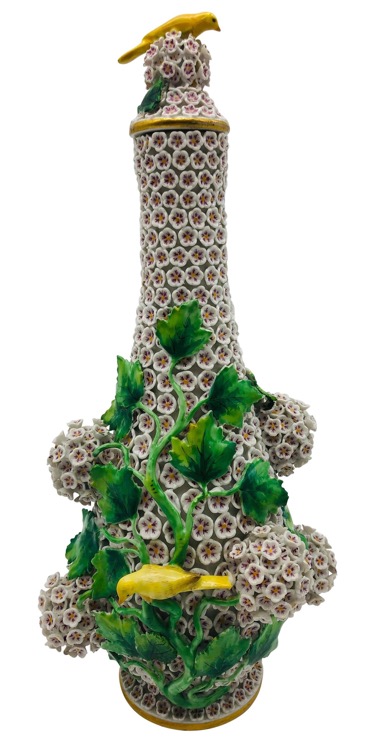
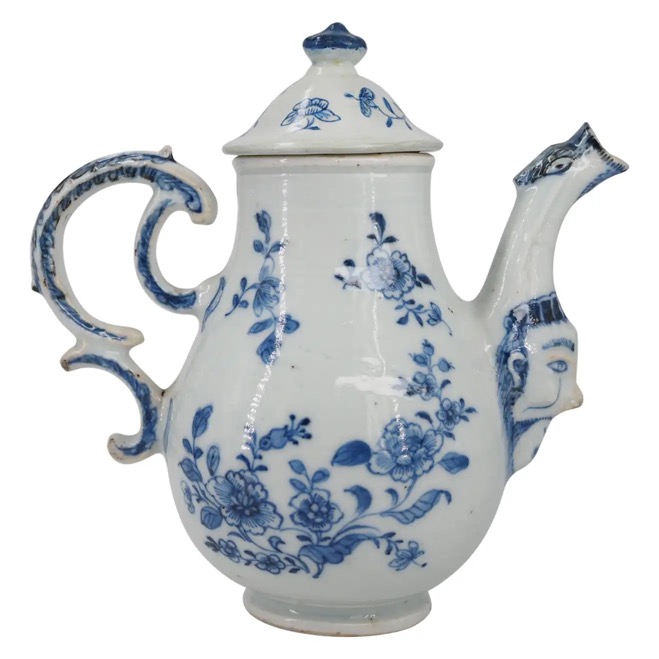
Above we have a 19th century Meissen snowball lid vase, selling for €3,690, and next to it we have a rare Chinese export ewer ca. 1750, copied from a Meissen original of circa 1740 (retail €1,700).
In the "Discovery of European Porcelain Technology" the authors describe the development of Meissen in three phases. Firstly, we have Ehrenfried Walther Von Tschirnhaus (1651-1708), who is mentioned in Wikipedia as a possible inventor of European porcelain. He certainly had the intellectual credentials, he studied in Leiden University, and met with Spinoza, Boyle, Leibniz, Huygens, and Colbert. Through the 1680’s, he applied his scientific knowledge to the development of industrial processes, focusing at the manufacture of glass and porcelain. He also established the first Saxon glass manufactures and developed polishing technology. In 1682, after studying large burning lens and mirrors, he used the equipment to reach temperatures well above 1500°C, higher than what could be achieve in contemporary combustion furnaces. From 1693-1694 onwards, Tschirnhaus found that porcelain could melt, and studied the refractory properties of several possible raw minerals. Understanding eutectics, he discovered that porcelain could be obtained from a mixture of clay and fusible minerals (flux). Tschirnhaus conducted most of this research guided by his prior knowledge of glass technology, whereby he seemingly believed that porcelain was a glass. By 1699, he actually obtained "porcelain" by melting and cooling mixtures of raw materials.
Tschirnhaus started the porcelain research long before Böttger (1682-1719) joined the quest, as his assistant, in 1705. Böttger started working as a pharmacist apprentice in Berlin, but devoted himself to alchemy. In 1701, he made his first demonstration in the presence of trustworthy witnesses. He pretended to transmute two silver coins into gold. After his "success", the Prussian King, tried to lock him as a treasure, but he managed to escape to Saxony. However, his fame preceded him, and Augustus II the Strong kept him watched and confined in Albrechtsburg Castle (in the town centre of Meissen), trying to exploit his "gold making" skills. Later on, as no gold was forthcoming, August directed him to porcelain research.
The next phase was to scale-up the making of porcelain. It started in 1706, when August ordered metallurgist experts to be hired in the Freiberg region, since they held valuable knowledge on thermal processes and kilns. The Freiberg Mining Counsellor, Gottfried Pabst von Ohain (1656-1729), expert in mineralogy and metallurgy, was chosen to direct the iron-metallurgist workers hired in January 1706. Ohain contributed with his vast practical knowledge of ores and minerals, as an expert furnace constructor, and developed formulas for overglaze enamels. Similarly, to Tschirnhaus, his contribution has been largely disregarded. Ohain provided Böttger with selected mineral samples, which were otherwise inaccessible to him.
In September 1707, three cellar vaults were dedicated to porcelain production at the Dresden fortress, providing an intermediate level between laboratory and factory’s production scales. The production of red stoneware was soon started, from iron-rich refractory clay mixed with a fusible flux fired to very high temperature. This stoneware was however extremely hard. Thus, it was cut, polished and wheel-engraved like a semi-precious stone, with the aid of equipment developed by Tschirnhaus. This period was characterised by the decline of Tschirnhaus’s influence, and by the abandon of the former Tchirnhaus’s program, based on the use of sun light kilns, which were appropriate for laboratory trials but unsuitable to be scaled-up to the factory’s level. This decay was compensated by the rising influence of the two new members who joined the porcelain "contubernium" (task force), Pabst von Ohain and a certain Dr. Bartholomaei (1670-1742). The latter was a medicine physician and naturalist who, working from 1707 onwards carried out numerous trials of paste preparation, intended to find the most favourable clay raw materials among those found in Saxony region. He mostly established the relative shares of the chosen clays. A protocol dated from 15 January 1708 certifies the invention of the European hard paste porcelain, establishing the transition from the laboratory trial stage to the production scale maturity. This document has been attributed either to either Böttger or to Bartholomaei.
In 1708-09, the first Saxon white clay (kaolin) was found in Erzgebirge. This discovery is often attributed to Böttger, but the research was actually conducted by Ohain and Bartholomaei. This finding was crucial for the success of the manufacture of white porcelain. New deposits were found later at Aue, near Schneeberg, in Saxony, and a mixture of the two clays with calcified alabaster and white silica was found particularly successful. After Tschirnhaus’ death, Böttger wrote a report to the Elector (28 March 1709), claiming that he had prepared "good white porcelain" equivalent or even better than the Chinese one. The official start-up date of the porcelain manufacture (at Dresden) dates from 23 January 1710, when the Saxon Court Chancellery issued a "Supreme Decree" in Latin, French, German and Dutch, announcing the discovery to the World. For security reasons, a Decree from 7 March 1710 transferred the factory to Albrechtsburg (Meissen), being officially opened in August 6, the same year.
Although the porcelain manufactory at Meissen started the production of porcelain in 1710, the decoration was poor, and the first significant sales only took place at the Leipzig Easter Fair in 1713. The nine years between the manufacture start-up and Böttger’s death, in March 1719, were characterised by a constant search for improvement of the manufacturing techniques. A wide variety of enamel pigments were developed, obtained from powdered metallic oxides. The inspector of Meissen manufactory, Johann Melchior Steinbrück (1673-1723), was largely responsible for the initial promotion of Böttger as a genius, to whom he claimed that all credit of the discovery should be given. Steinbrück was the brother in law of Böttger, and under Steinbrück’s suggestion (1715), Augustus chose Böttger as director of porcelain manufacturing and attributed him the title of Baron. The secrecy policy followed by Augustus also contributed for the relative oblivion of Tschirnhaus’s role, since early documents were declared secret.
Soft-paste porcelain is a generic description describing bone china (e.g. Spode), Seger Porcelain, vitreous porcelain, new Sévres porcelain, Parian porcelain and all types of soft feldspathic porcelain (e.g. a clay body mixed with glass frit).


This type of porcelain is home to an enormous variety of objects and prices, ranging from, on the left, a Caughley gilt soft-paste porcelain fluted tea bowl and saucer, dated ca. 1790, and selling for $95, to on the right, a soft-paste Sèvres porcelain milk jug, dated ca. 1760, and selling at $35,000.
References
David Whitehouse, "Chinese Porcelain in Medieval Europe" (1972)
Suzanne G. Valenstein, "A Handbook of Chinese Ceramics" (1975)
Robert Finlay, "The Pilgrim Art: The Culture of Porcelain in World History" (1998)
Ian C. Freestone, "The Science of Early British Porcelain" (2000)
Claire Le Corbeiller and Alice Cooney Frelinghuysen, "Chinese Export Porcelain" (2003)
Carlos Araújo Queiroz and Simeon Agathopoulos, "The Discovery of European Porcelain Technology" (2005)
David Barker and Teresita Majewski, "Ceramic studies in historical archaeology" (2006)
Thorsten Giehler, "The Ceramics of Eurasia - How export porcelain has shaped a globalised world" (2019)